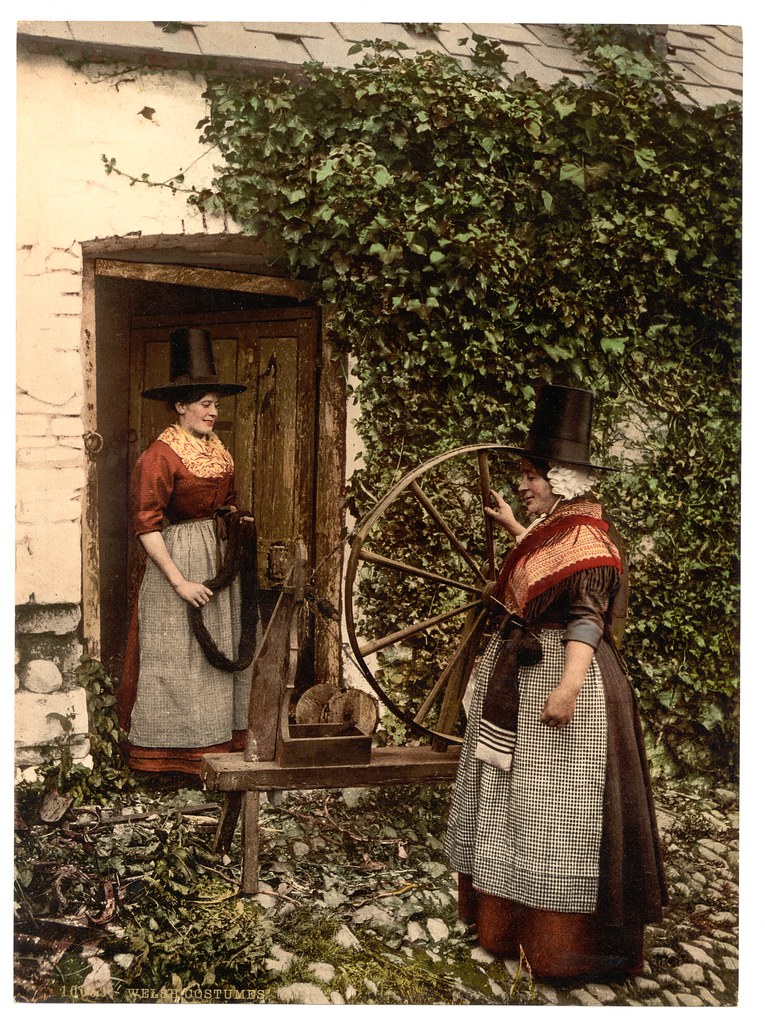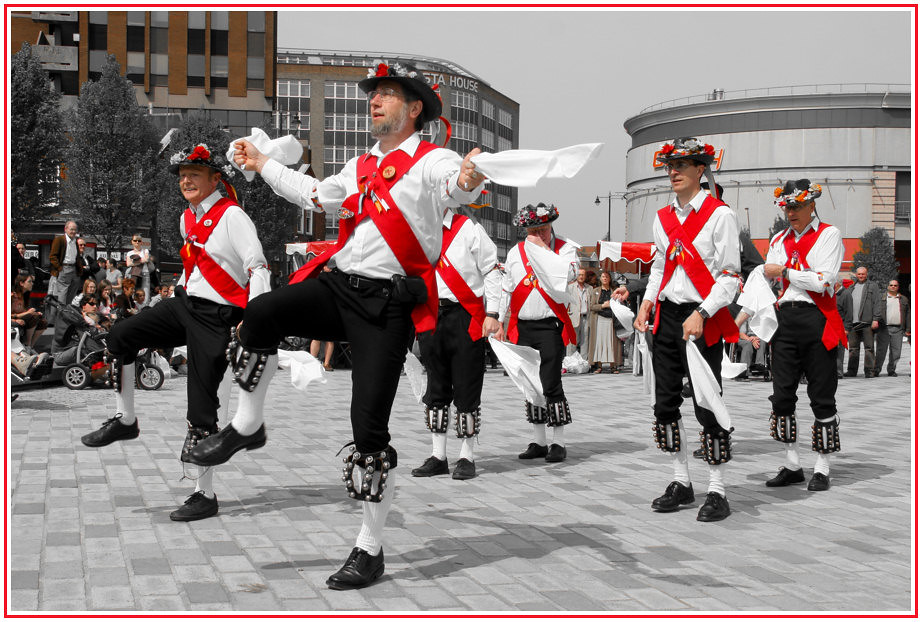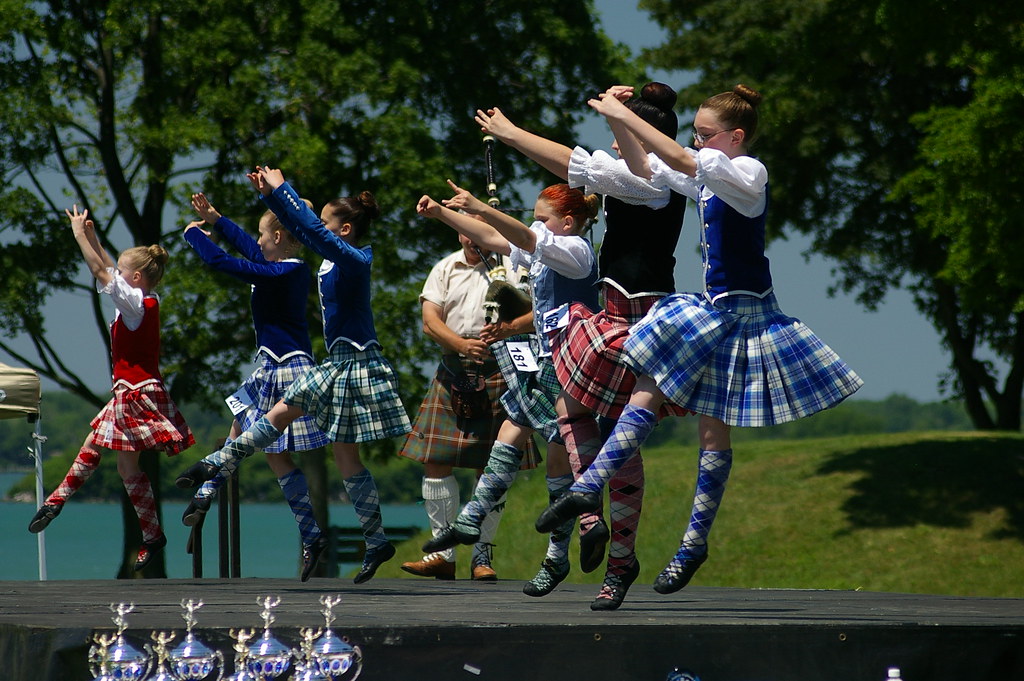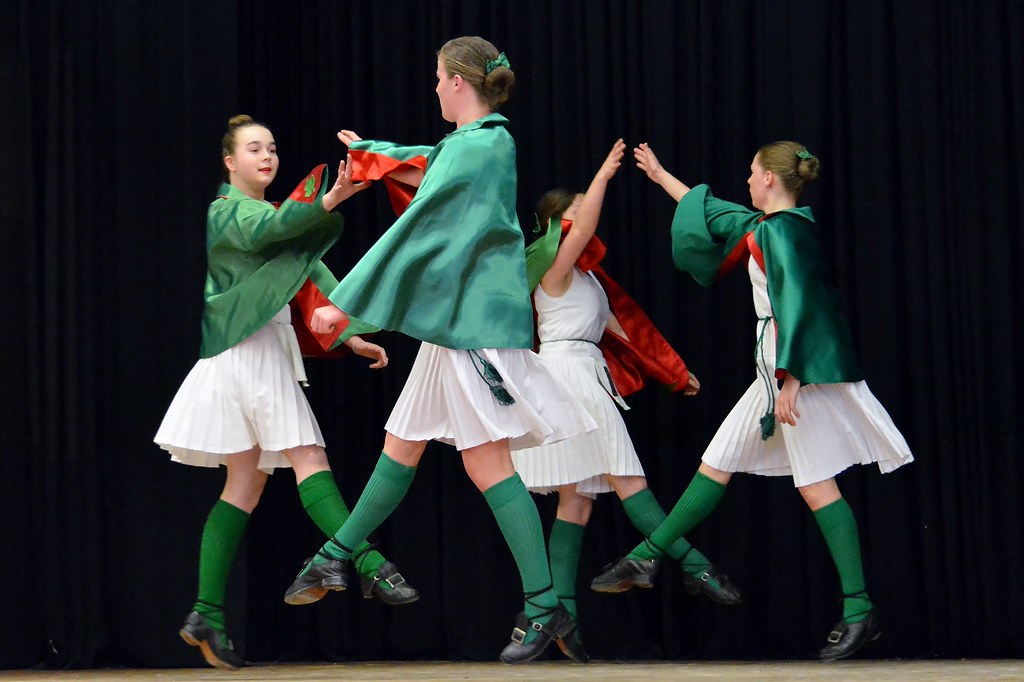Traditional Dances
Some dances, like kagura, have existed for hundreds or thousands of years as part of rituals. These can be religious rituals, usually practiced only by certain people, or they can be cultural rituals, practiced by everyone. These are some of the traditional dances from Australia, Canada, the USA, New Zealand, and the British Isles.
Traditional Aboriginal dances (Australia)
Note: In some Aboriginal and Torres Strait Islanders cultures, it is very disturbing to see images or hear the names of people who have since died. As a warning, these links contain may images of people who are no longer alive.
Traditional Aboriginal dance is culturally vital. In mainland Australia, Aboriginal communities use traditional dances to perform the events of the Dreamtime (more or less their ancestral stories; for more specifics, see The Dreaming). Traditional Aboriginal dance generally includes traditional clothing and body painting, as well as clapping sticks and didgeridoos (traditional instruments of the region). For those who are lucky enough to be invited, many traditional dances can be seen at festivals known as corroborees. For everyone else, here are some examples:
- Dance Rites 2017 (Video)
- Australian Aboriginals Traditional Ceremonial Dance (Video)
- Koomurri Aboriginal Culture Workshops (Video Channel)
- Bangarra Dance Theater perform Unaipon (Video)
For Torres Strait Islanders, traditional dance is used as a form of literature.
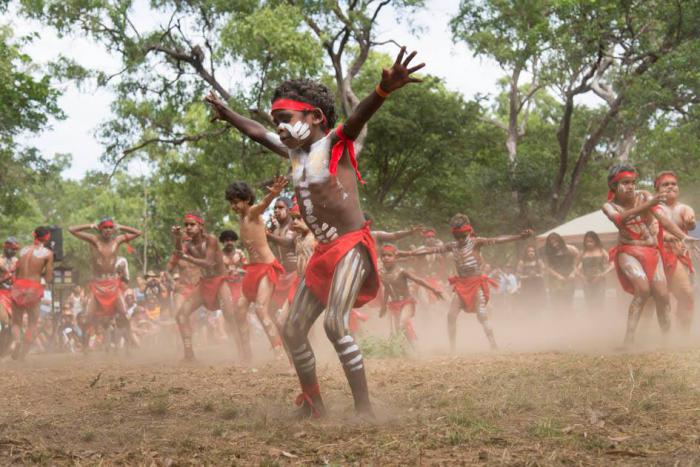
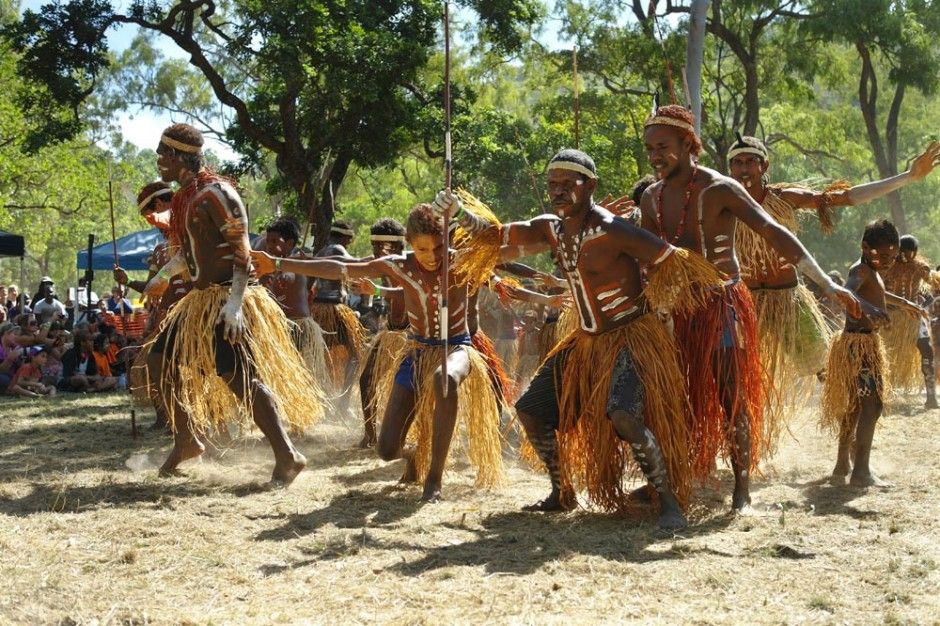
Traditional Native American dances (Canada and USA, except Hawai’i)
In Native cultures, dance is an important ritual for traditional religion and culture. Clothing is a major part of the dance ritual. Some dances are performed by a shaman or elder, while others are group dances for anyone of a certain demographic (male, female, warrior, adult, teenager, etc.) or community dances. There may be dances performed as a prayer/divine request (e.g., Stomp Dance), as storytelling (e.g., Hoop Dance), at a certain stage of life (e.g., Apache gahan dance, Ghost Dance), at a certain time of the year (e.g., Green Corn Dance, Snake Dance, Sun Dance, Soyal), or at a certain type of event (e.g., Jingle Dress Dance, war dances, Inuit whale harvest dance). Most Native dances were banned in America in the 19th and early 20th centuries, so some traditions have been lost or changed, but interest in the topic is increasing among new generations.
More about Native dances: Powwow Dances, Legends of America, Pow Wows, Encyclopedia Britannica
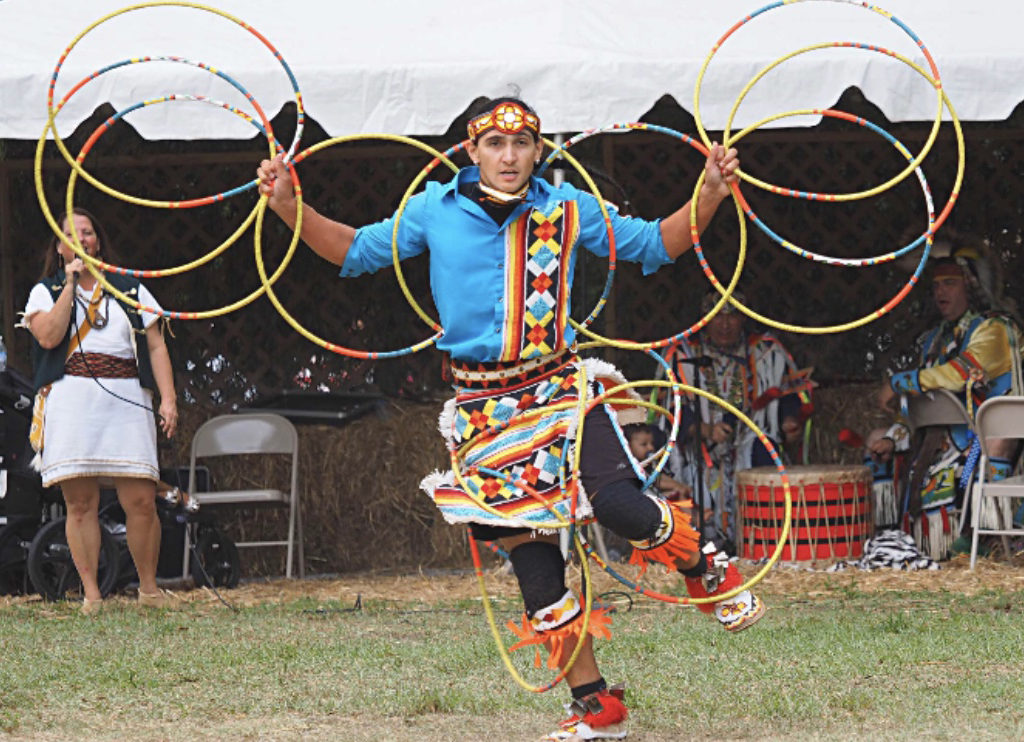
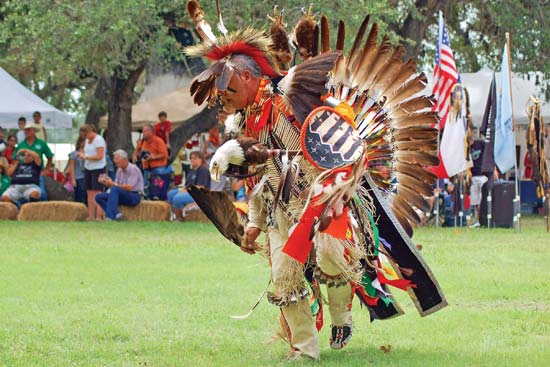
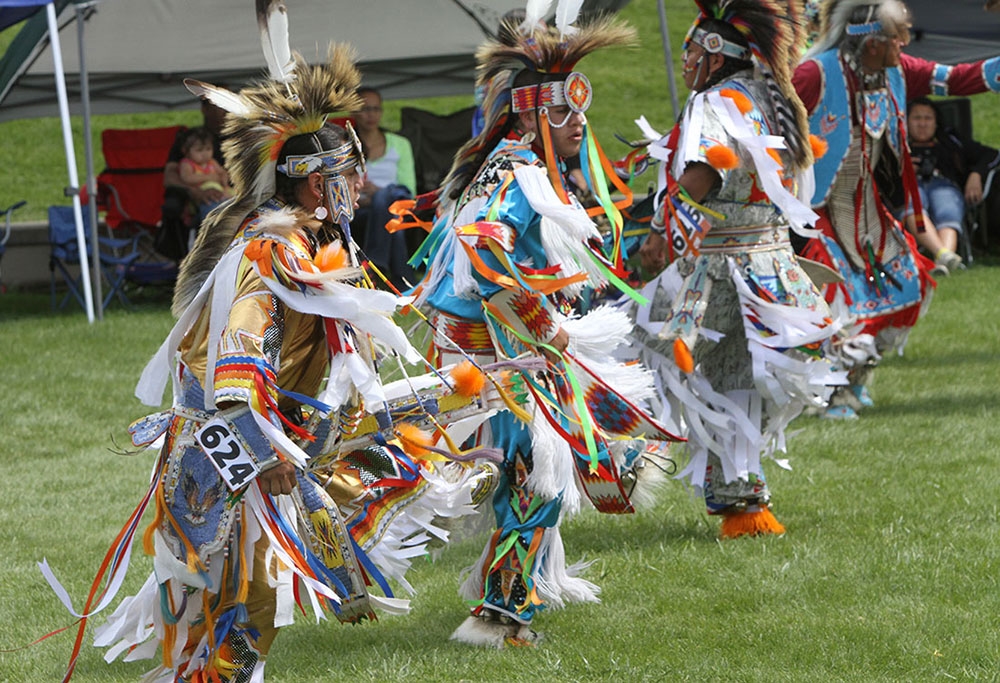
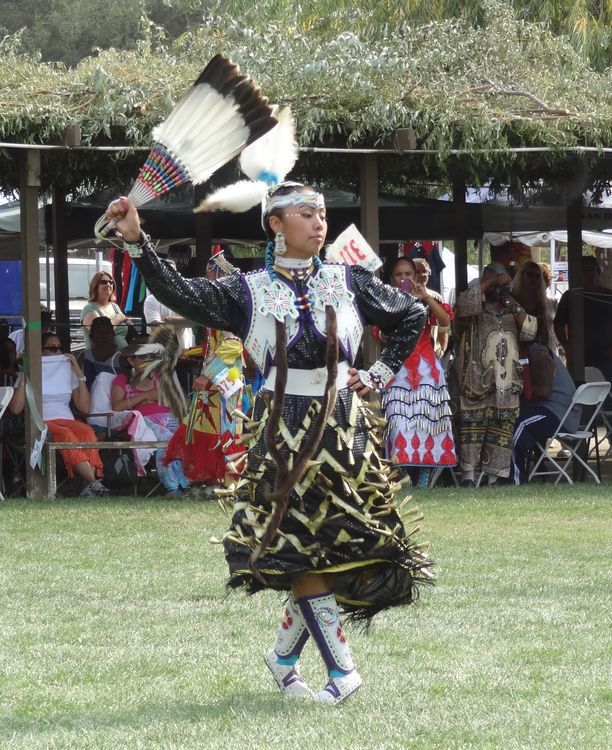
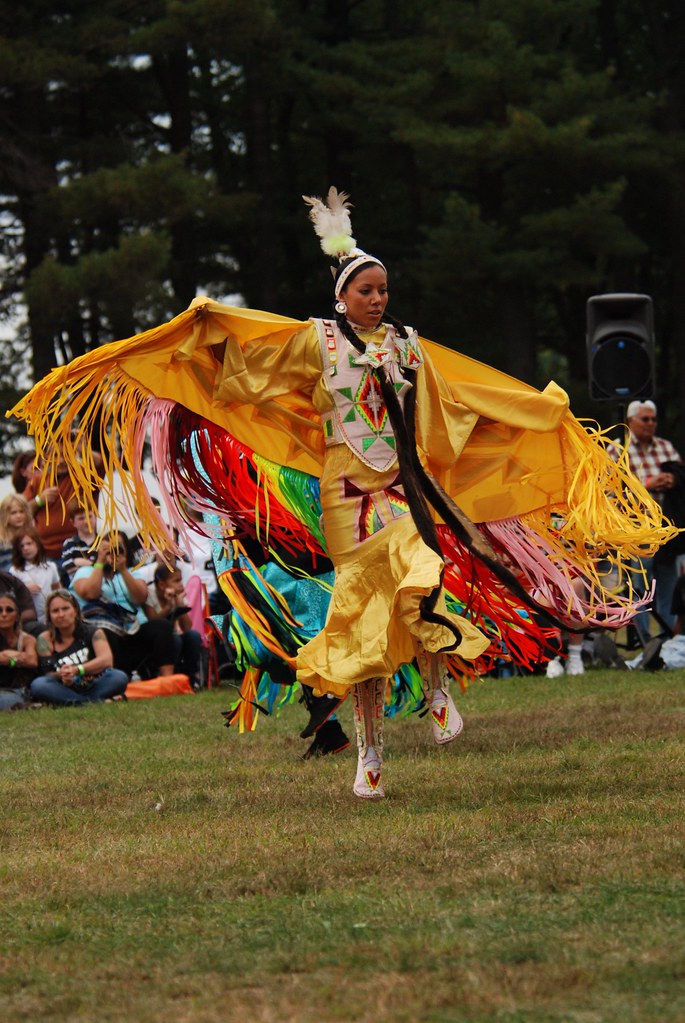
Traditional Polynesian dances (Hawai’i, New Zealand, Tahiti, Samoa)
The most famous Polynesian dances are the Haka (New Zealand) and the Hula (Hawai’i). In addition, there is Ori Tahiti (Tahiti) and the fire knife dance (Samoa). All of these dances serve as storytelling dances with various forms. Performances for tourists may feature dancers from different traditions performing one after the other, so it is wise to learn more about the different types of dances in order to understand what you see! In particular, Hula and Ori Tahiti are often mistaken for each other by tourists and casual observers.
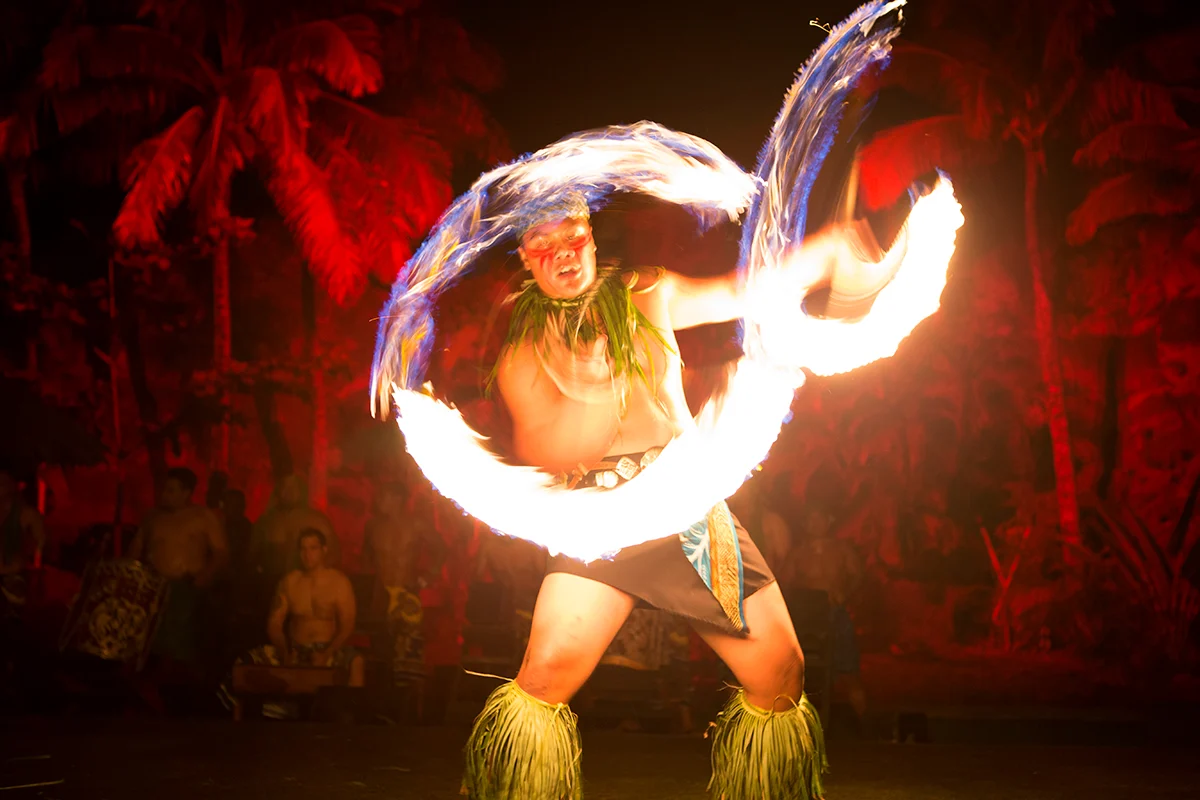
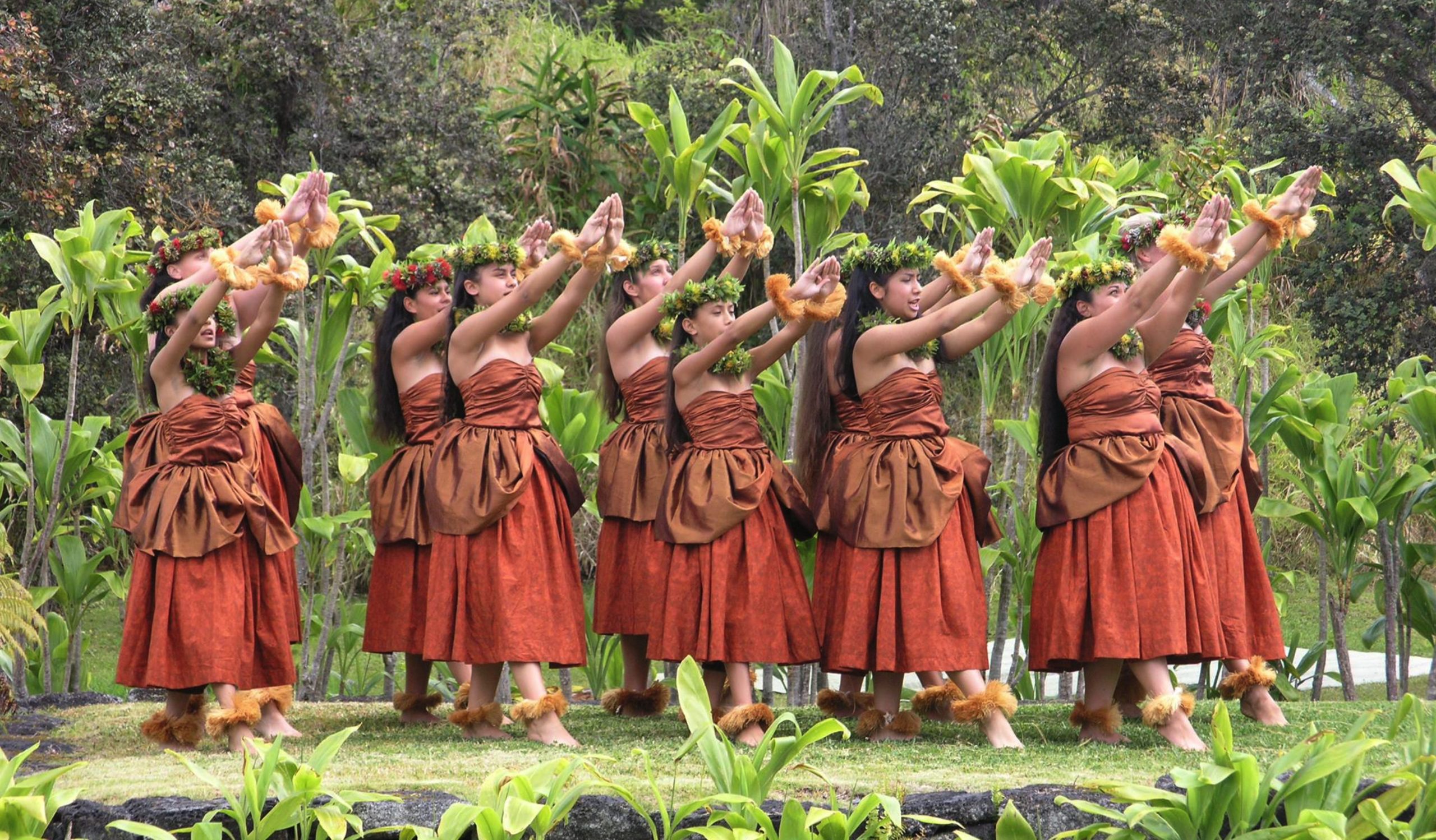
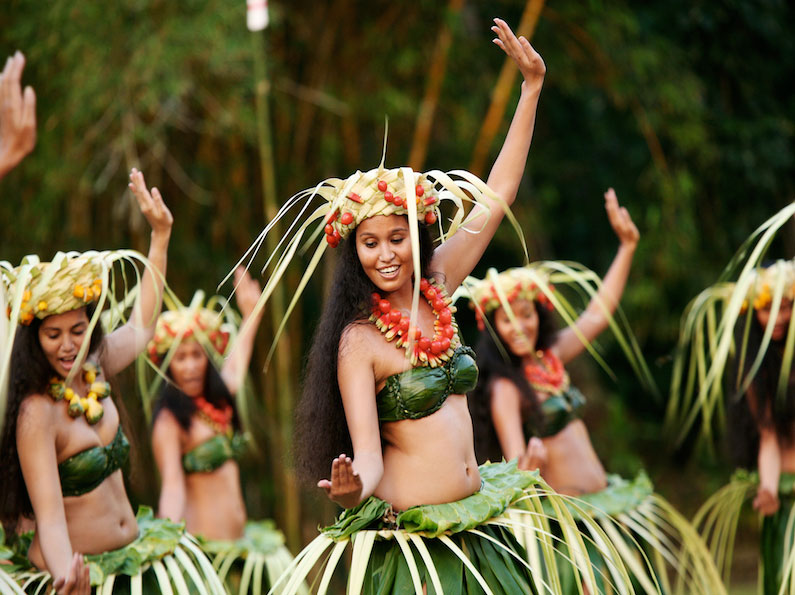
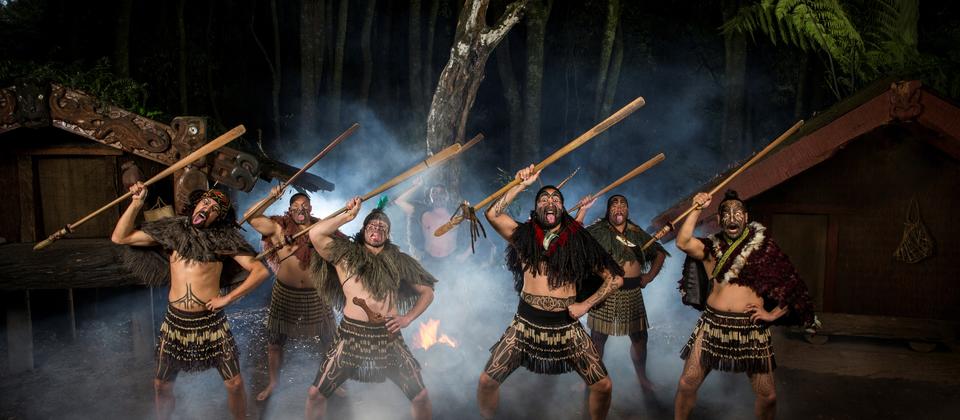
Traditional British Isles dances
The oldest known dances in the British Isles are passed down from Celtic culture. Many of them are circle dances. These dances have survived the best in the northern and western parts of the UK, especially Scotland and Ireland. However, remnants of the Ceili (ケイリ) dances can be found across the UK, as can Ceilidh festivals. Since then, different regions have developed distinct dance styles.
In Ireland, common dances include the reel, the jig, and the hornpipe. The now-international dance company Riverdance performs traditional Irish dances for a global audience.
- The History of Irish Dance
- Irish Dancing: A Brief History
- Features of Irish Dance
- Cooley’s Reel (Video)
- Irish Step Dancing (Riverdance) 2009 (Video)
In Scotland, the Ceilidh dances, step dancing, Highland dancing, and Scottish country dancing are considered the four main styles.
- Ceilidh Dancing
- Scottish Dance 101
- The Scottish Dance Tradition
- The History and Tradition of Highland Dancing
- Highland Reel Scottish Dance Competition (Video)
In England, Morris dancing is an iconic style of dance. Sword dancing (Rapper sword and longsword), clogging, and maypole dancing are also famous traditional English dances.
- Beginners’ Guide to English Folk Dance
- Abingdon Traditional Morris Dance – Princess Royal (Video)
- Rapper Sword Dance (Video)
In Wales, traditional dancing was nearly extinguished in the 1730s by extreme religious rules that banned dancing. Some families kept the traditions alive in secret, and a few traditional dances and songs have survived.
- Welsh Folk Dancing – Almost Lost without Trace
- Welsh Folk Dance History
- Basic Welsh Dance Lessons (Video)
- Welsh Traditional Dance at International Students’ Dinner (Video)
Ballroom Dances
Ballroom dances are not uniquely Anglophone, but they are an essential part of Anglophone cultures. Ballroom dances are dances that were traditionally seen in formal, high society parties and galas in western Europe, usually performed by the adult daughters and sons of wealthy or noble families. In the late Renaissance/early Baroque era, such dances included the pavane and galliard (16th-17th centuries). Later in the 17th century, King Louis XIV of France founded a royal academy of music and dance, where he popularized the minuet and incorporations of ballet into ballroom dancing (17th-18th century). The waltz and Viennese waltz, respectively Bavarian and Provençal in origin, were introduced to England in the early 19th century. Waltzes became the earliest examples of formal partner dancing in which partners stayed close together for the entire dance (rather than rotating partners and/or dancing at arms’ length). Tango, an Argentinian dance, became popular in ballrooms in the late 19th century. Next, foxtrot, which was invented by African American dancers, was brought into an elevated social status by the iconic dance couple Vernon and Irene Castle in the early 20th century along with the One-Step.
Ballroom dances are typically seen in American and European period dramas, at weddings and other very formal events, and in television shows such as Strictly Come Dancing and Dancing with the Stars. Today, they may be seen alongside country dances (see below) or traditional Latin dances, such as salsa, bachata, cha cha, samba, bolero, paso doble, mambo, and merengue. To learn more about ballroom dances, please visit Wiki DanceSport.
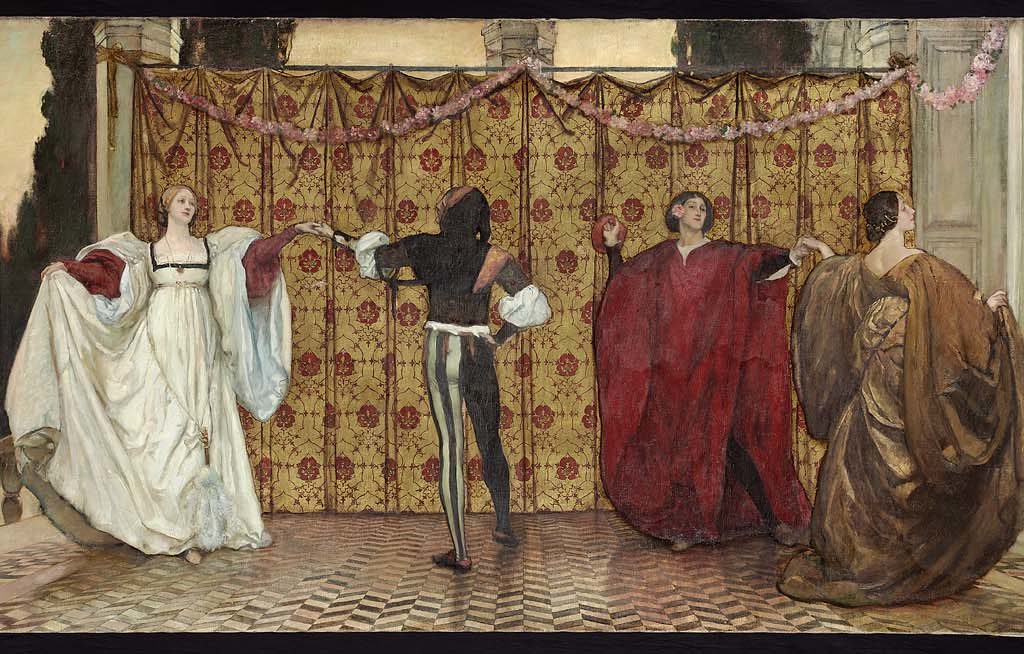
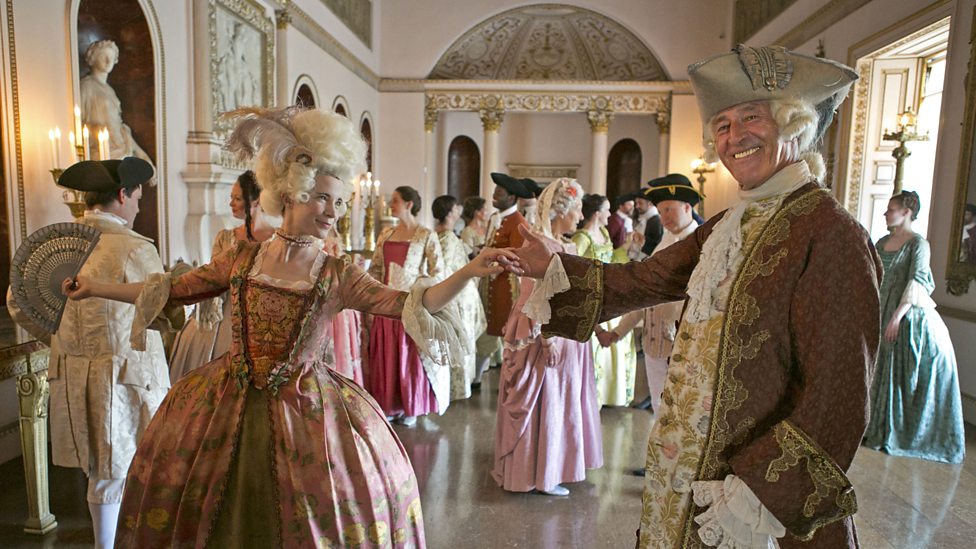
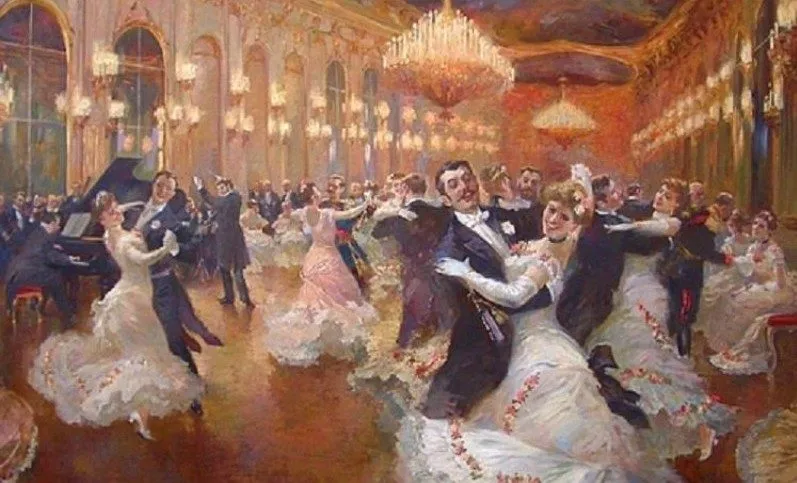
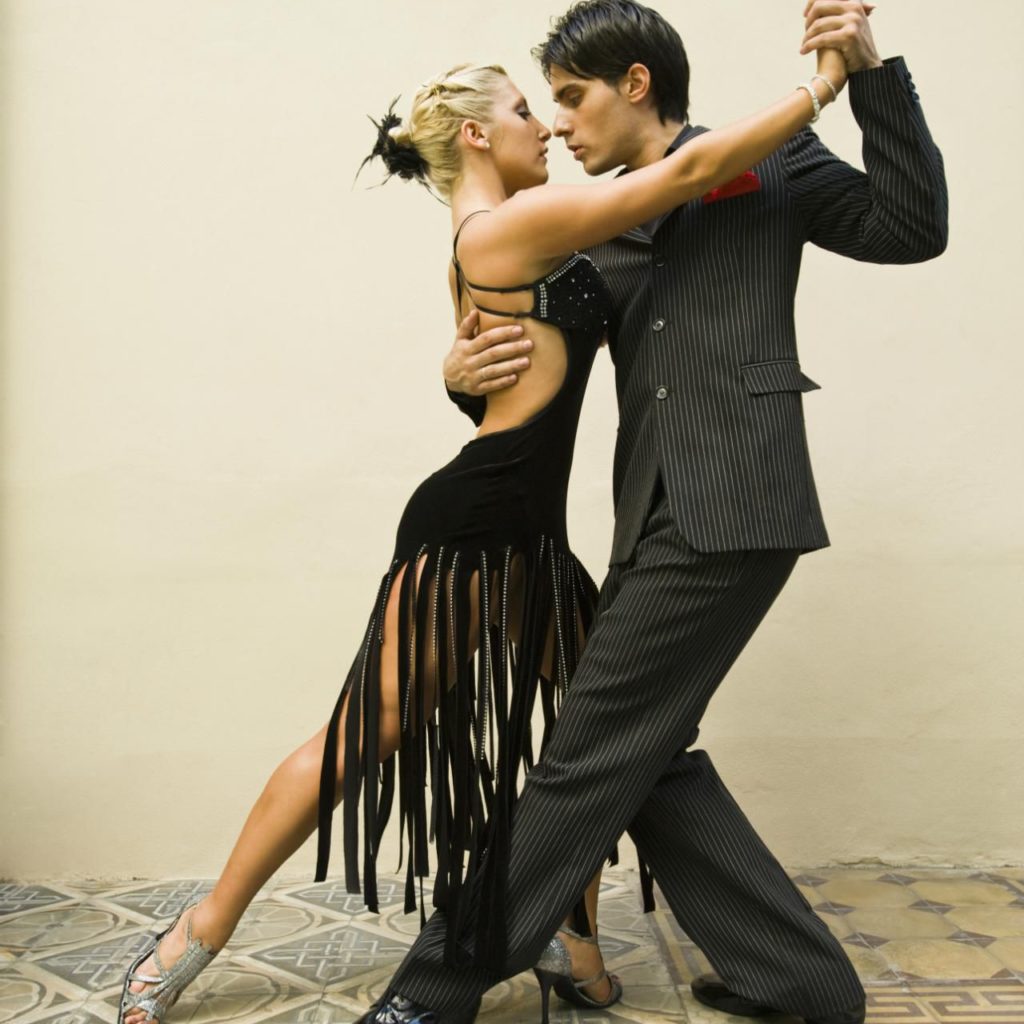

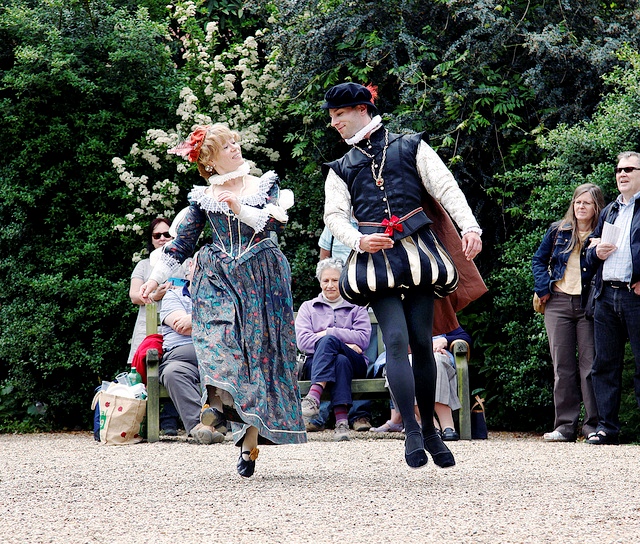
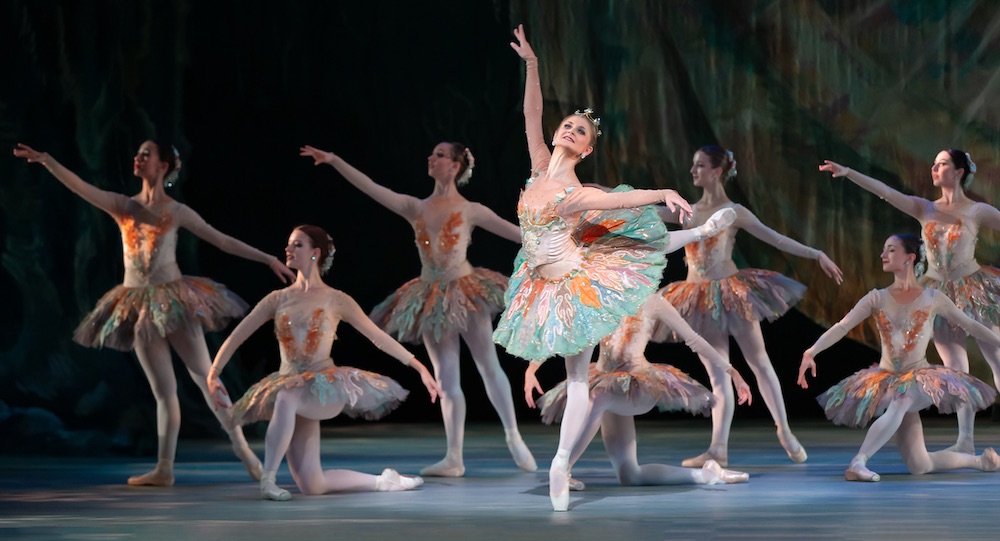
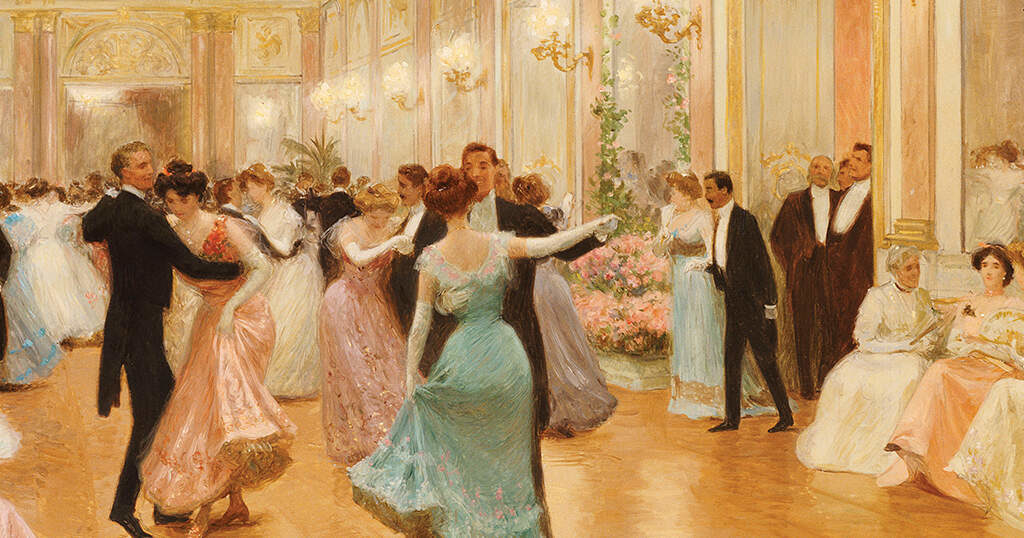
“The Ball” (oil on canvas) by Gilbert, Victor Gabriel (1847-1933); Private Collection; Photo © Christie’s Images; French, out of copyright
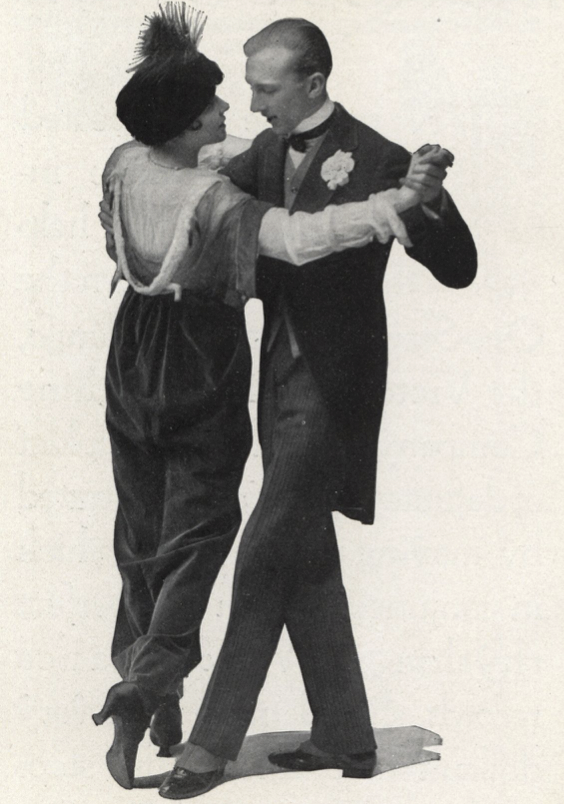
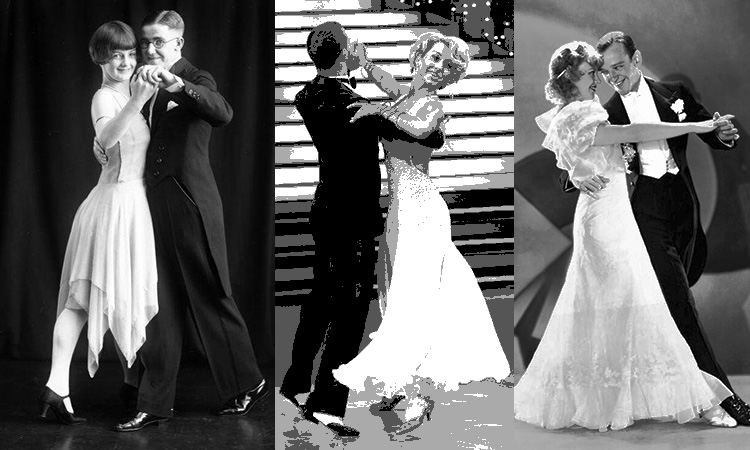
U.S. Colonial Country Dances
After colonization, the U.S. was increasingly filled with a variety of (mostly Western) European immigrants from varying social classes. Along with them came many dance traditions. Many of these traditions evolved over time to become different from their European cousins. The country dances and folk dances were more severely affected by this geographical separation, as working-class and middle-class families could not afford to travel often to Europe the way that the wealthiest families did. Over time, America developed its own distinct styles of line dancing, as well as the “two step,” square dancing (Metis/Irish clogging style, Southwestern style, quadrille style), western promenade, and contra dance.
Around the 19th century, mainstream American culture started incorporating folk dances from other European traditions, such as polka (Slavic/Germanic folk), and immigrants and enslaved people from other continents began establishing their own dance traditions within their own communities as well, such as the cakewalk. (19th century American society was very much still segregated.)
In addition, an entirely new style of dance was developed, called “tap.” Tap is a combination of Irish clogging and African American percussion. It started in African-American communities after the repression of African cultural practices during slavery, but it became famous in minstrel shows after the Civil War. Later, in the early 20th century, it appeared in vaudeville and Broadway shows. It was common in Hollywood movies from the 1930s to the 1950s. Since then, it has faded from popularity and reappeared several times, occasionally returning to the nation’s attention through plays, movies, or other media. To learn more about the greatest tap dancers in American history, click here: Link
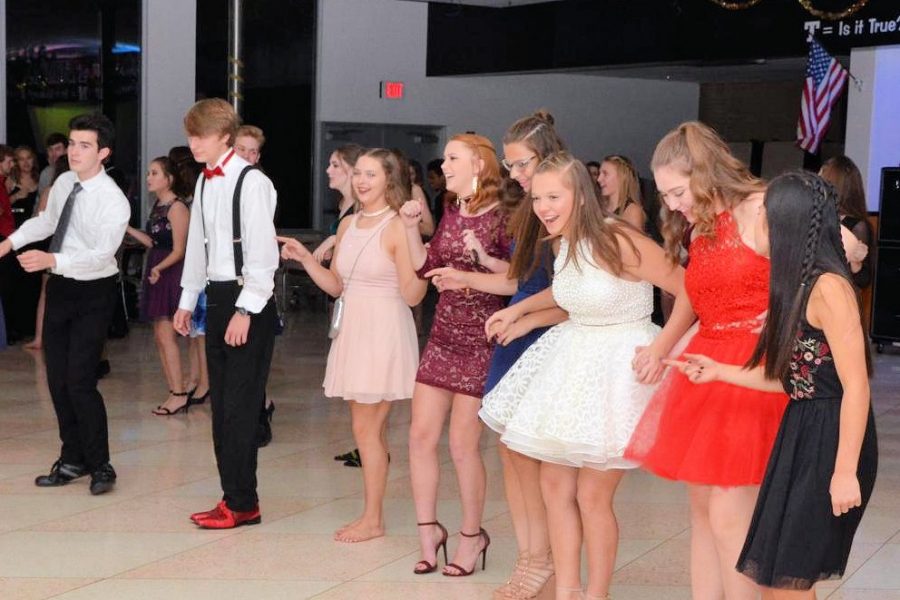
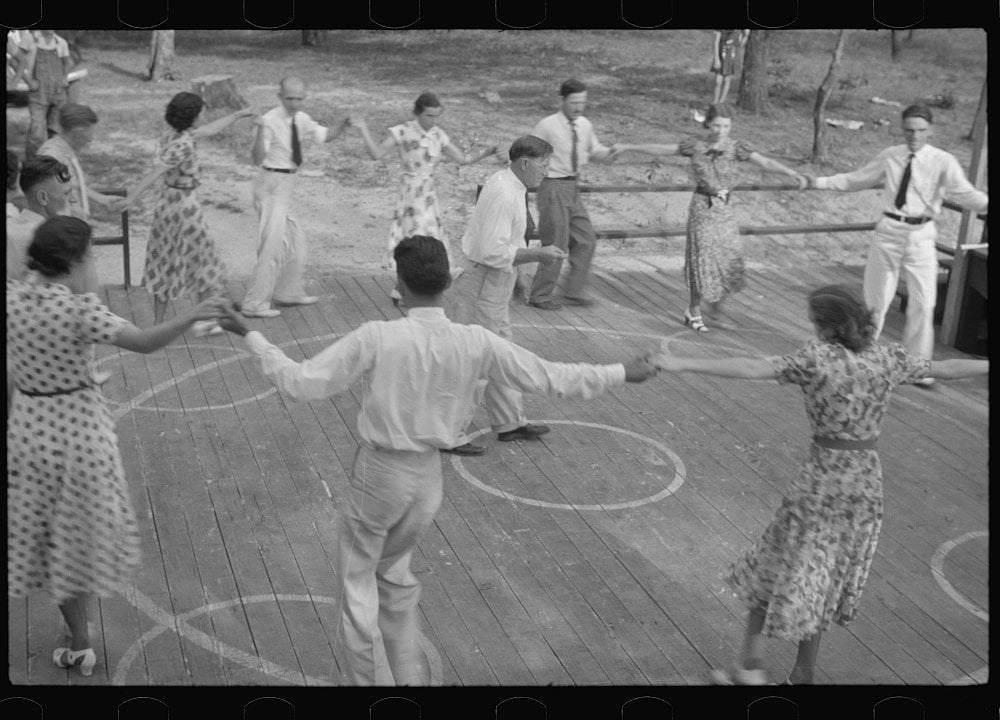
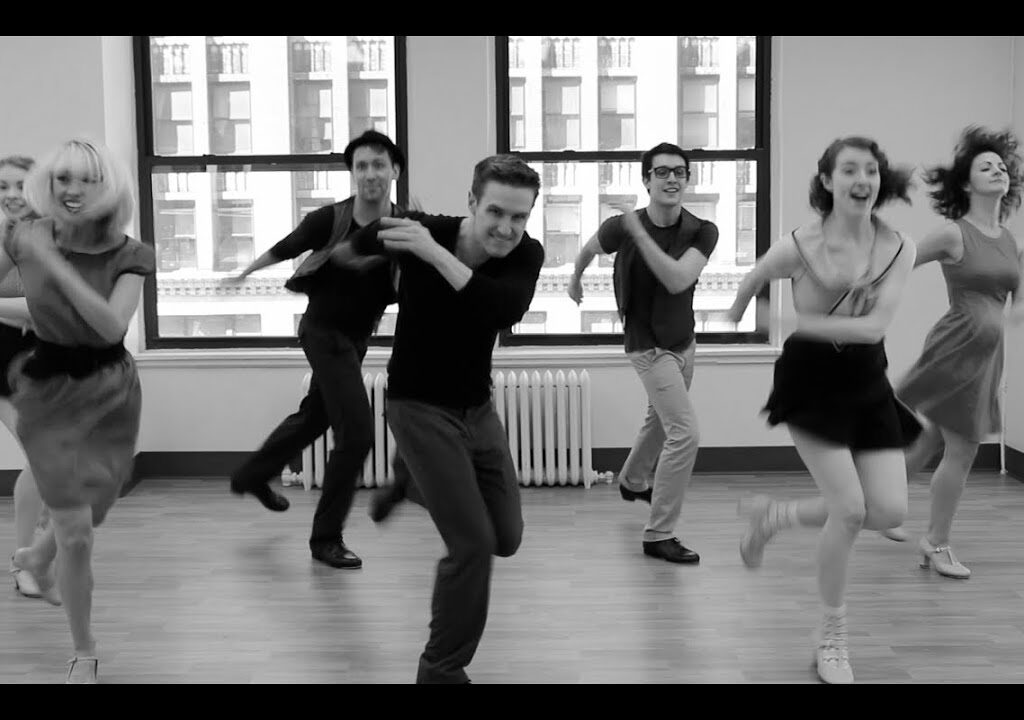
20th Century Dances
In the 20th century, a lot of dancing became less focused on long routines and more focused on short, fun moves to mix and match. For example, ragtime/rag dancing (1910s-1920s) included moves such as the Charleston (1920s), quick step (1920s), shimmy (1920s), and black bottom (1920s). These were quickly followed by Jive (1930s), rumba (1930s), conga (1930s and 1950s), and East Coast swing – known as Lindy hop (1930s-1940s) boogie woogie (1940s) or jitterbug (1930s). Swing dancing continued to be popular across America during the mid-century, as seen in the development of West Coast swing (1950s). The 1960s were a time of breaking tradition and innovation, and dances such as the mashed potato, the twist, and the robot (all 1960s) were no exception. In the next decades, innovation continued through breakdance (1970s), disco dance (also 1970s), jazz dance (20th century; latest explosion of popularity from MTV in the 1980s), and head banging (1980s-1990s).
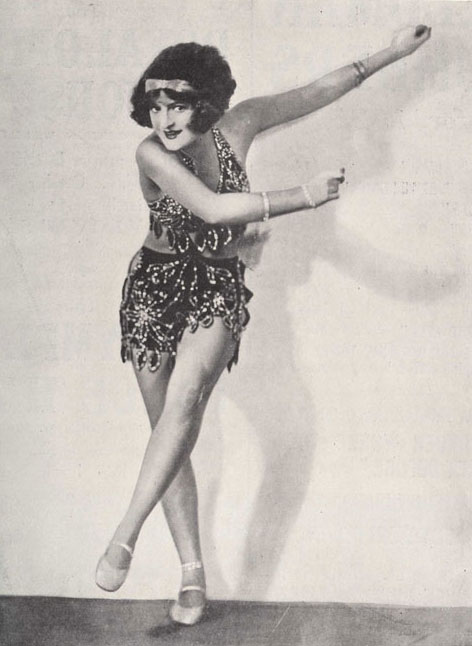
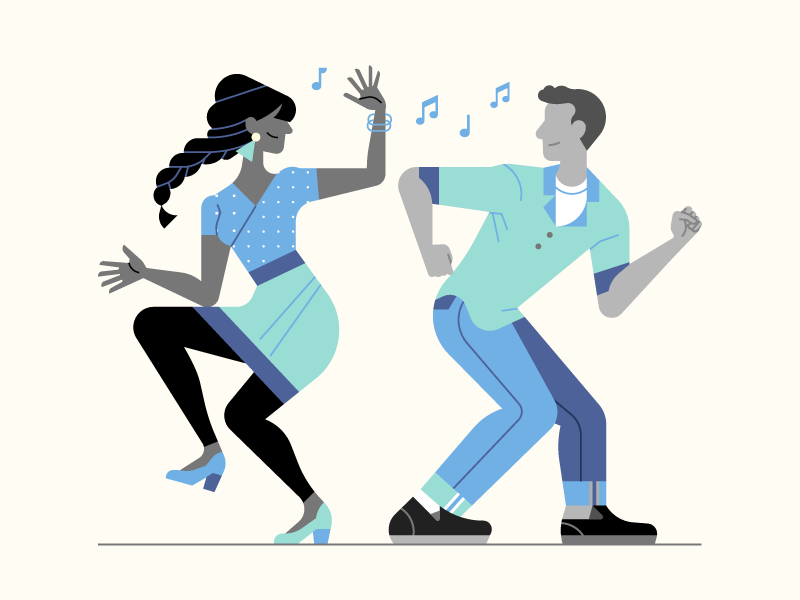
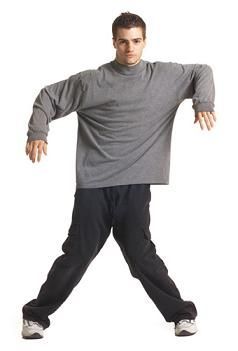
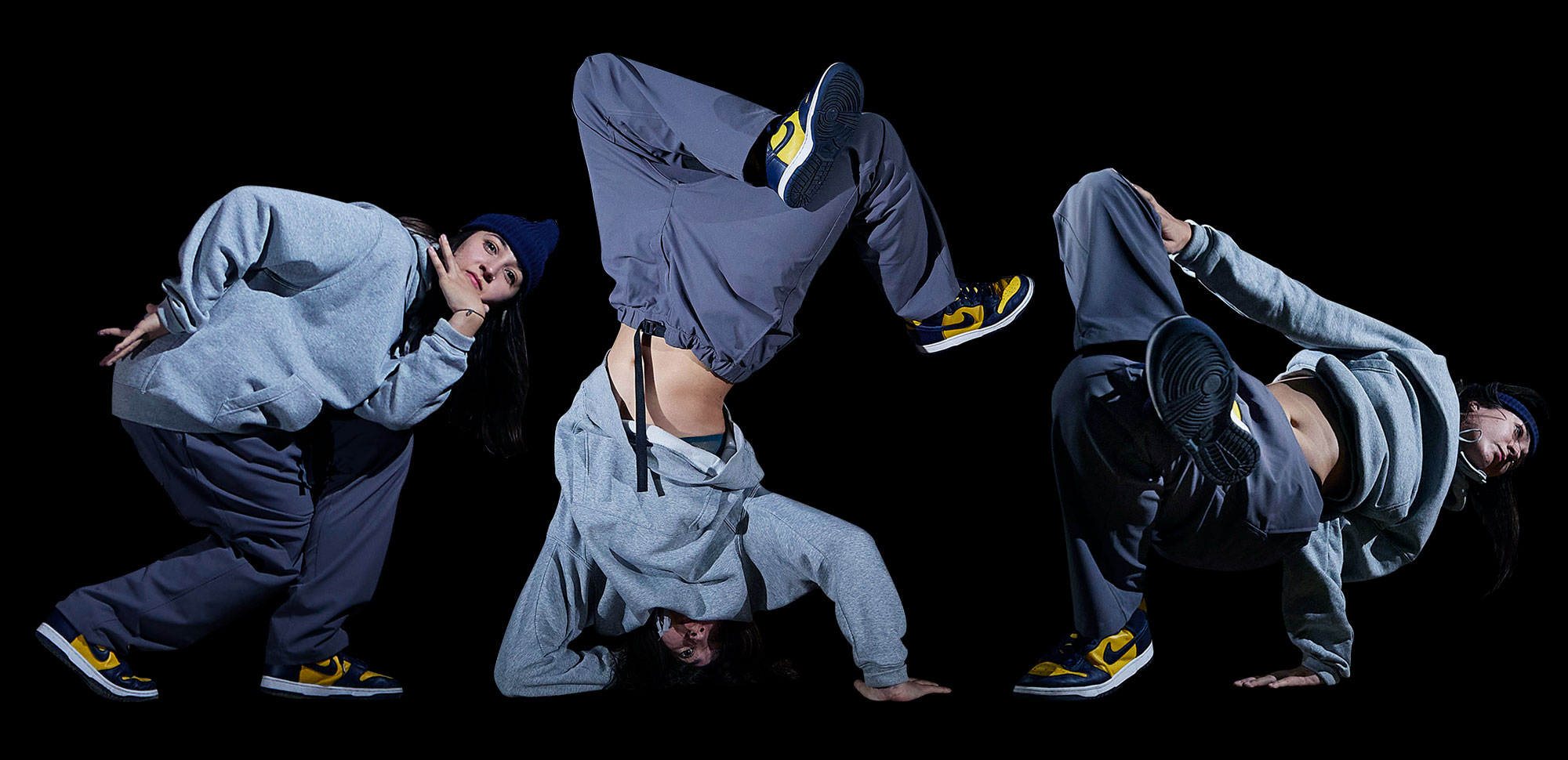
Modern Dances
Modern dances can be seen in music videos and in television shows such as So You Think You Can Dance. New dances for songs are often created by musicians’ choreographers or by TikTok users, so stay tuned to find the latest dances!
Iconic Song Dances
Before TikTok and other social media became popular, iconic dances were not as fleeting as they are in the 2020s. Several iconic dances that have lasted for decades are the hokey pokey, chicken dance, Cupid Shuffle, Cha Cha Slide, Macarena (both eponymous) or Electric Slide (associated with the 1982 single “Electric Boogie“). Baby Shark is likely to live on for a long time as well.
Special Topic: Debutante Balls vs. Prom
Debutante Balls
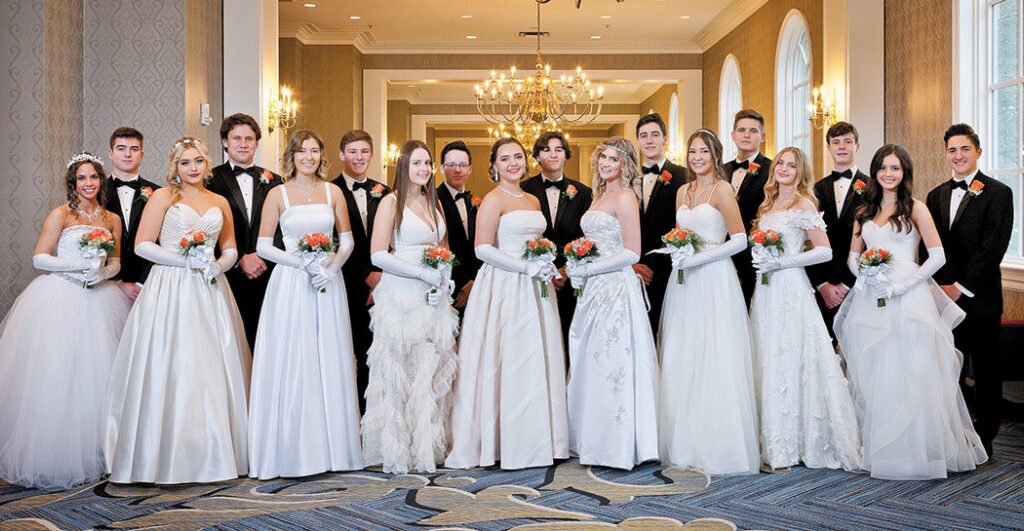
Debutante balls are a legacy of the 18th and 19th century British monarchy’s ritual for young ladies’ presentation at court. By “young ladies,” we do not mean the polite term for adolescent and teenage girls; rather, until the world wars, all of the girls presented at court were from the upper classes: daughters of British lords, earls, counts, dukes, and other nobility. Young ladies were presented at court to the monarch (king or queen) by their mother or by a female relative who had already been presented at court. They wore white gowns in a style determined by the monarch for that year and followed any other instructions (hairstyles, accessories, etc.) to have the correct outfit. The presentation at court indicated that the girl/woman was prepared and eligible for marriage to a titled suitor (someone from the nobility). This practice is shown in the recent popular TV show, Bridgerton. More details
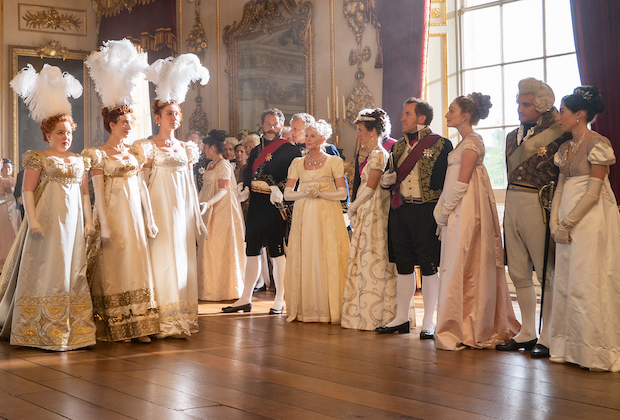
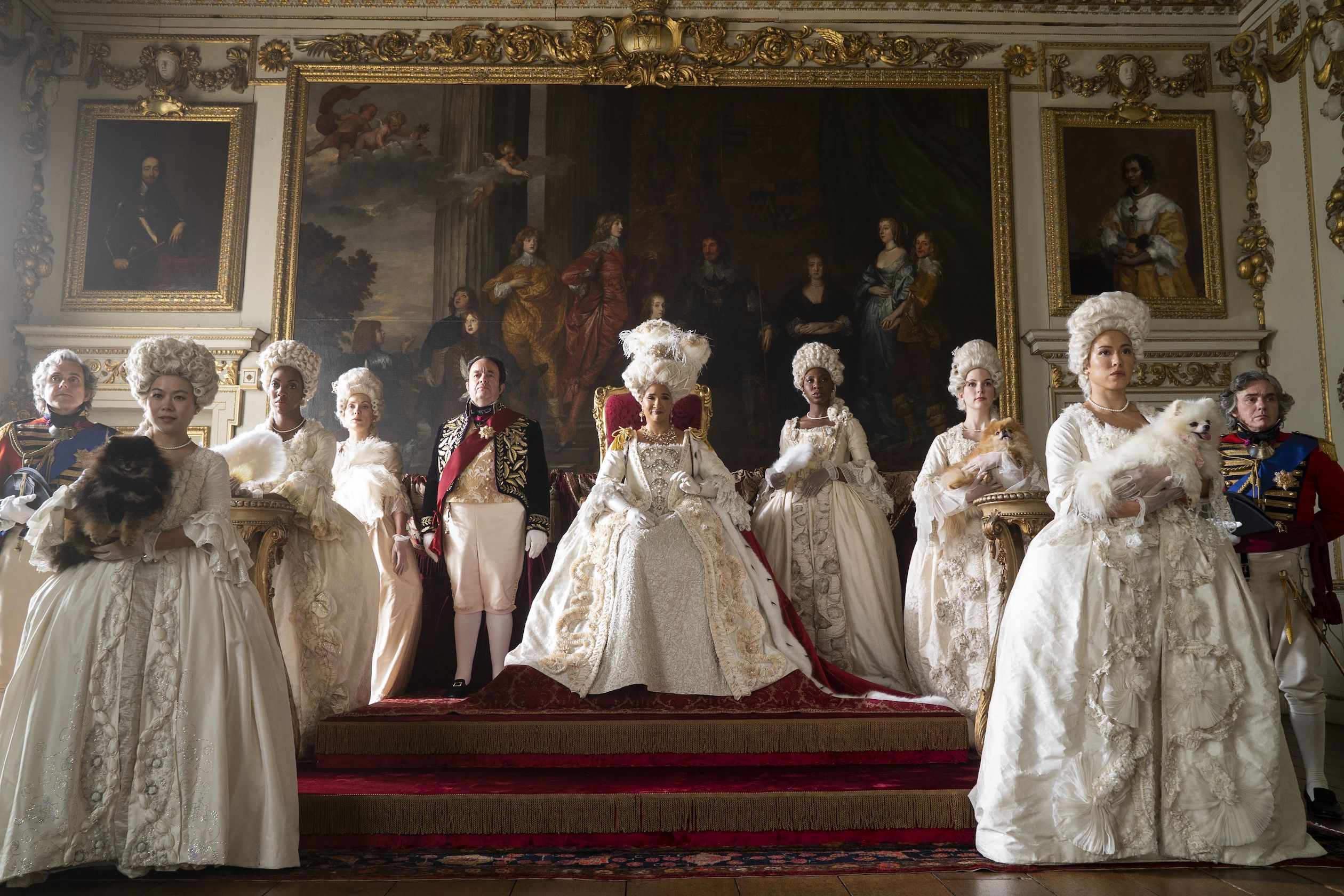
It is fitting that Bridgerton focuses on debutante culture during the reign of Queen Charlotte, for the practice became popular during the reign of King George III and Queen Charlotte: Throughout history, the event in London has continued to be referred to as Queen Charlotte’s Ball.
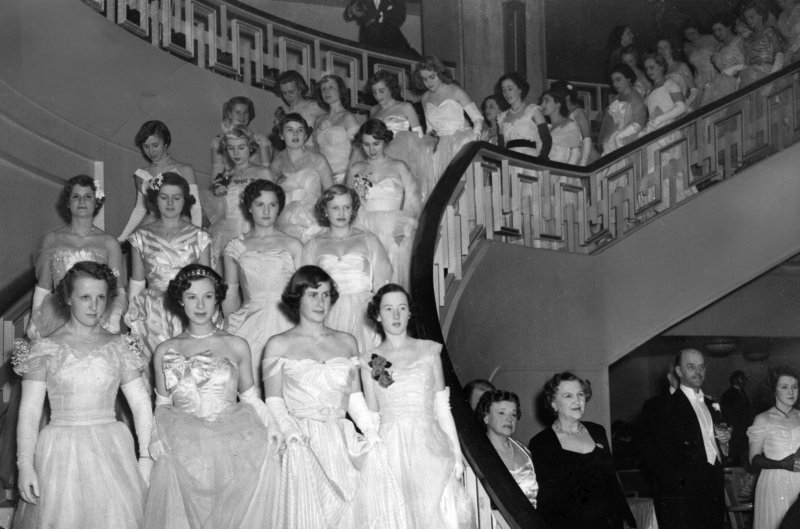
When the tradition transferred to the U.S., the practice remained exclusive, but a family’s status and eligibility was granted by the existing upper class collective, represented by the father’s membership in a specific club, rather than by a king. In this way, it behaves rather like a clique for social control. It also entrenches traditions of racial segregation: Since the events were hosted by segregated social clubs, Black families had to create their own clubs, and through family legacies and traditions, many of the clubs remain segregated today.
Queen Elizabeth II ended the practice of court presentations in 1958, shortly after ascending the throne, but the evolved tradition has continued through private groups in the UK, in the (mostly) eastern USA and, with some recent exceptions, in Australia. They are advertised as modernized charity events, usually claiming to facilitate networking for young women’s careers and raising money for other establishment forces such as the military. However, the exclusive (exclusionary) element of the event remains a steadfast tradition.
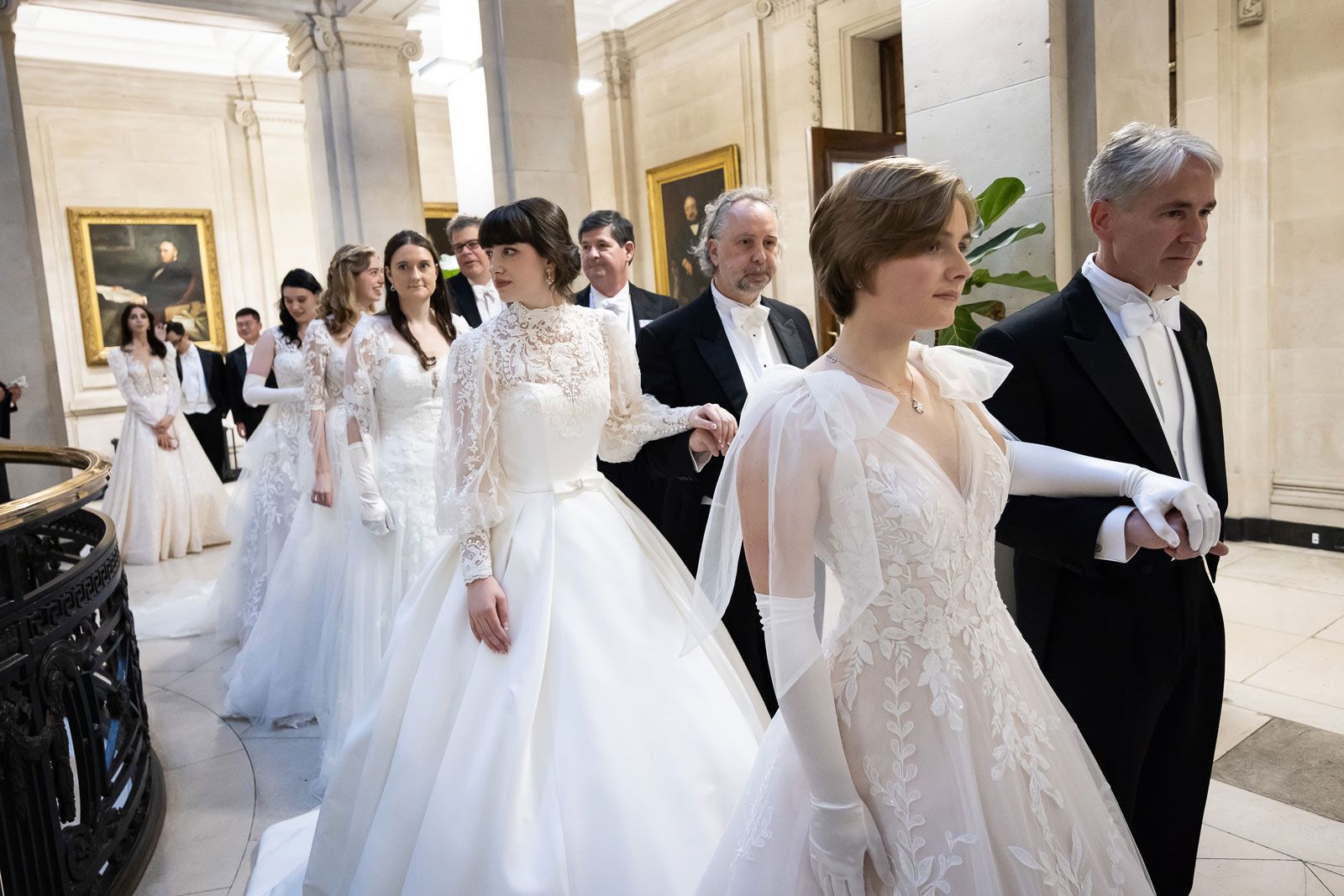
(Still very white, but technically there are Asian people in the background?)
Cotillon
Before becoming debutantes, some children are sent to cotillon classes to learn formal etiquette and dance. Cotillons have much more relaxed rules; although there is a final dance, boys and girls are all trained as a group and can wear any color of formal wear they like – as long as it isn’t white!
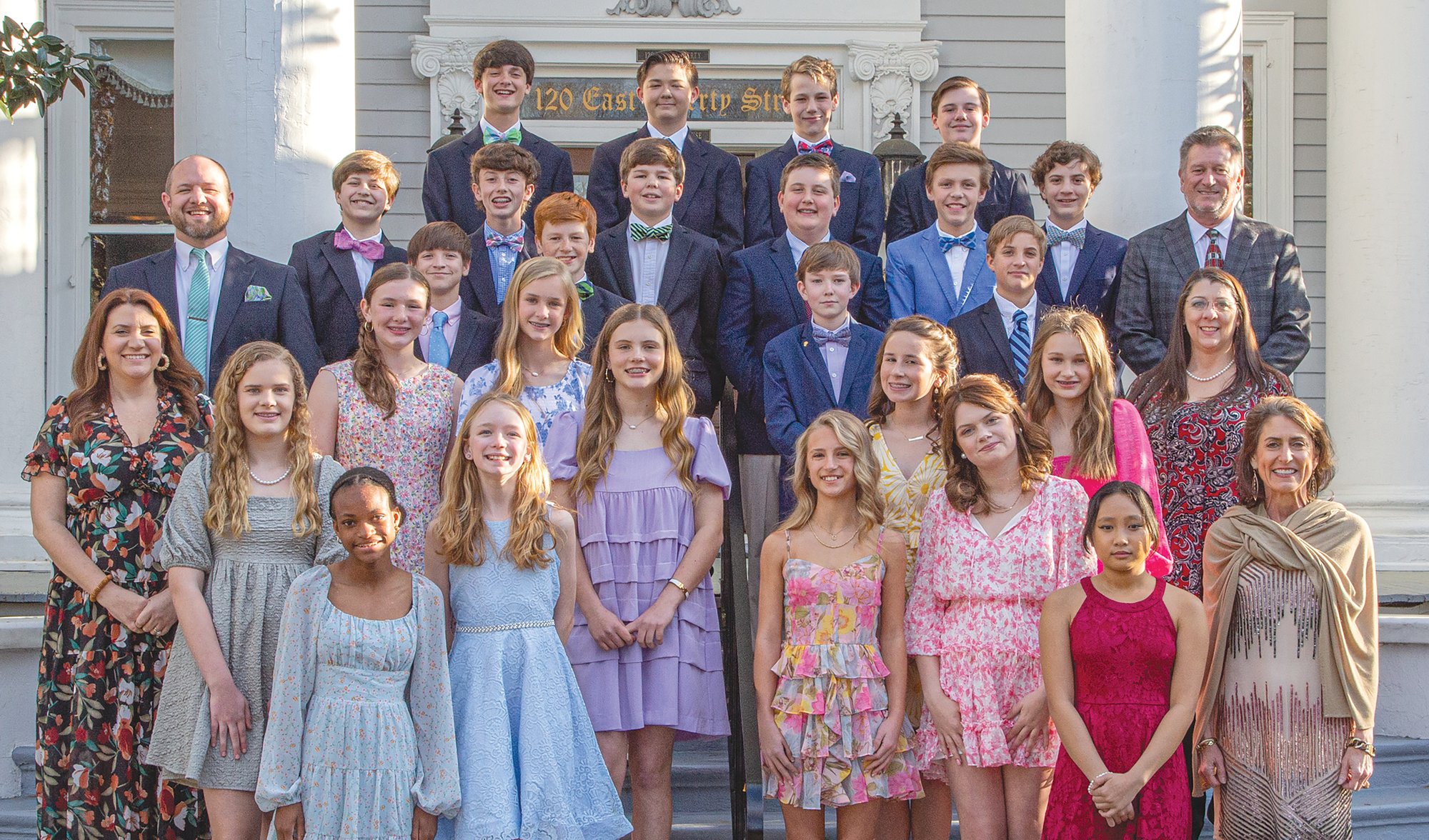
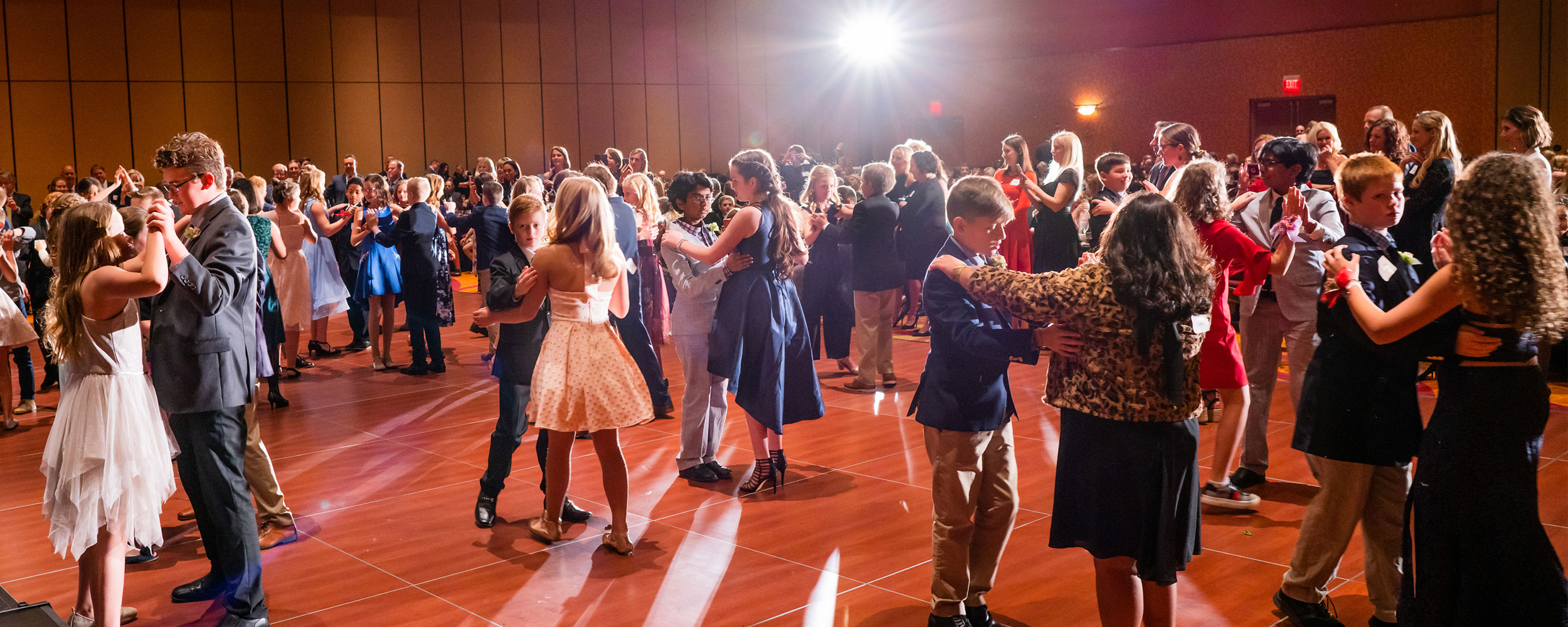
Cotillon dances are not as common as debutante balls, but they offer similar enjoyment to the young people who participate in them.
Prom

Prom started as a semi-egalitarian response to debutante balls. At the time, it was seen as a more economically and socially inclusive practice in schools, so that young teenagers of all backgrounds could participate in a formal dance and “coming of age” event. However, when proms first started, schools in the USA were still segregated and homophobic, and U.S. schools are unequally funded to this day based on local taxes, so “inclusive” is a relative term. Nevertheless, the practice did allow a broader spectrum of people to participate. (Note: In Ireland, the school formal dance tradition for senior students, which resembles prom, is still called “Debs” in some regions.)
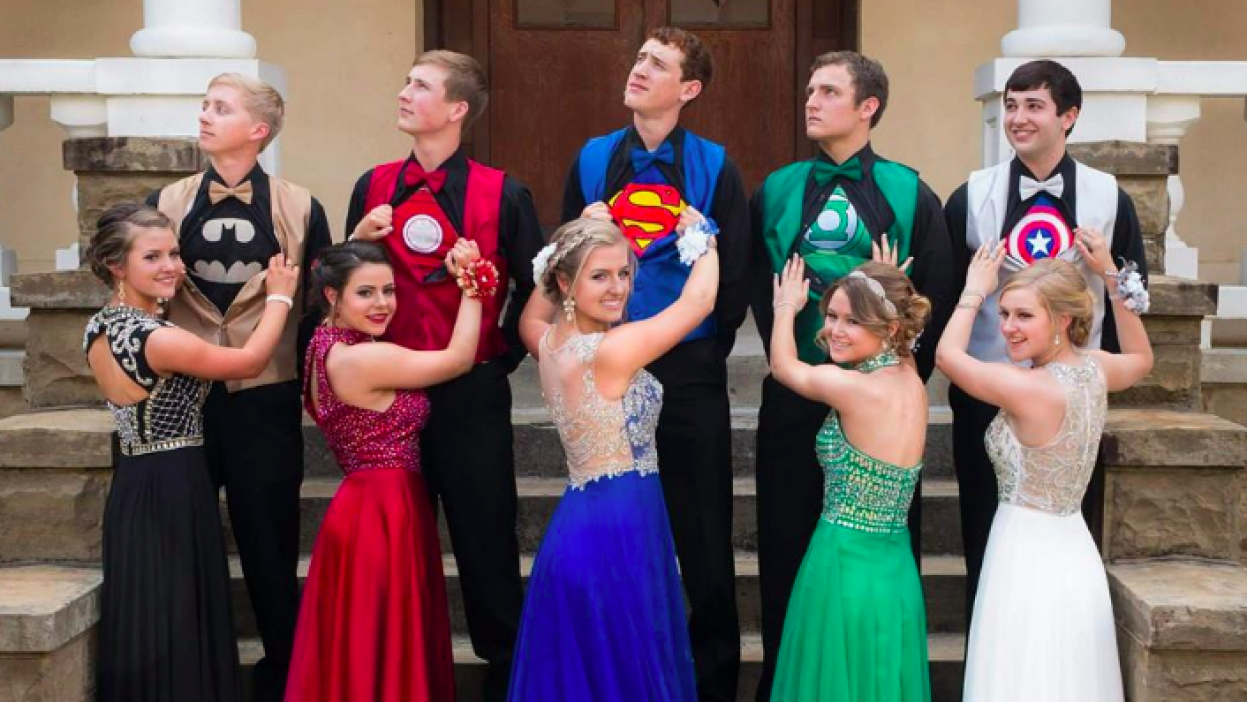
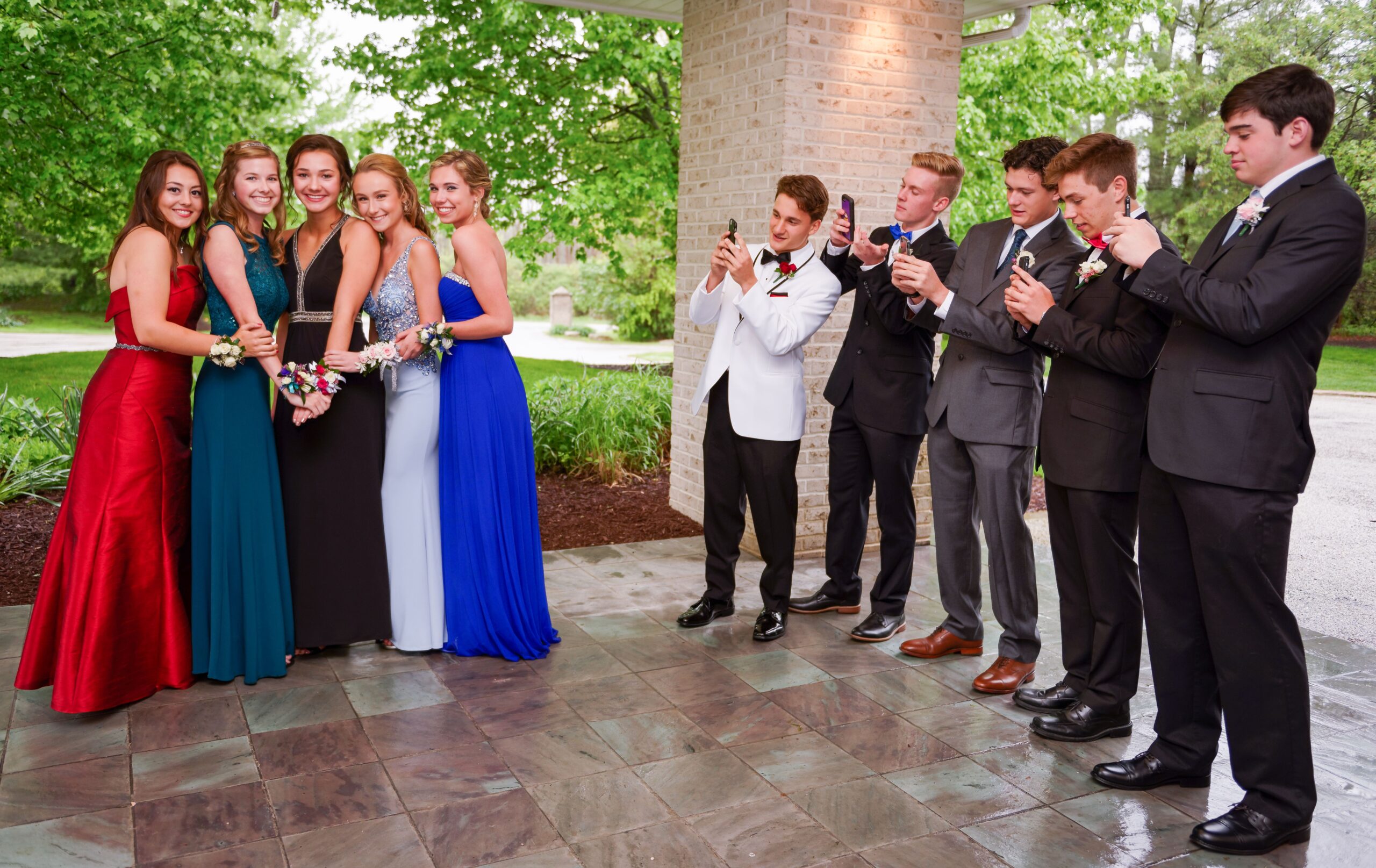
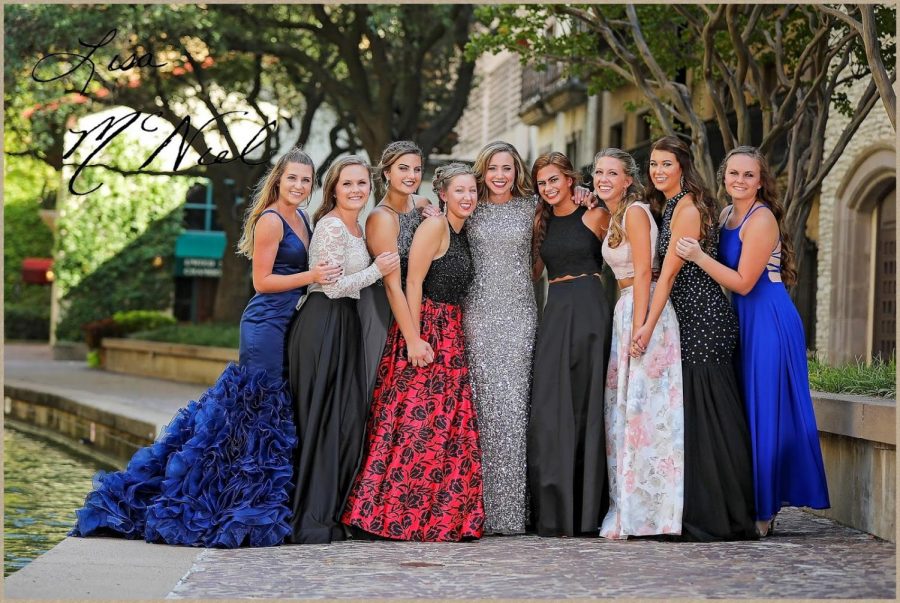
At a prom, students usually attend as couples or in groups of friends. Students are not required to attend; in fact, they must buy tickets if they want to go. At some smaller schools, all high school students are eligible to buy tickets to prom; at other schools, it is a “senior prom” (tickets are only available to 4th-year students) or a “junior prom” (tickets are available only to 3rd year students OR 3rd and 4th year students). However, if the prom is restricted by year, students can still invite other students from younger classes to attend the event as their date.
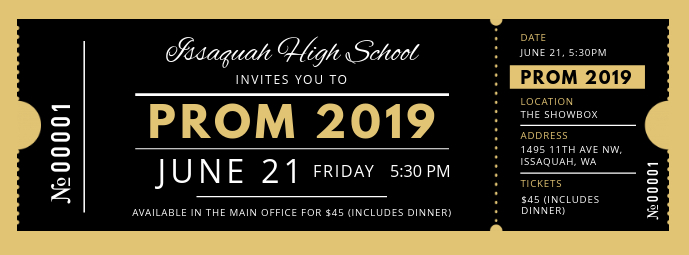
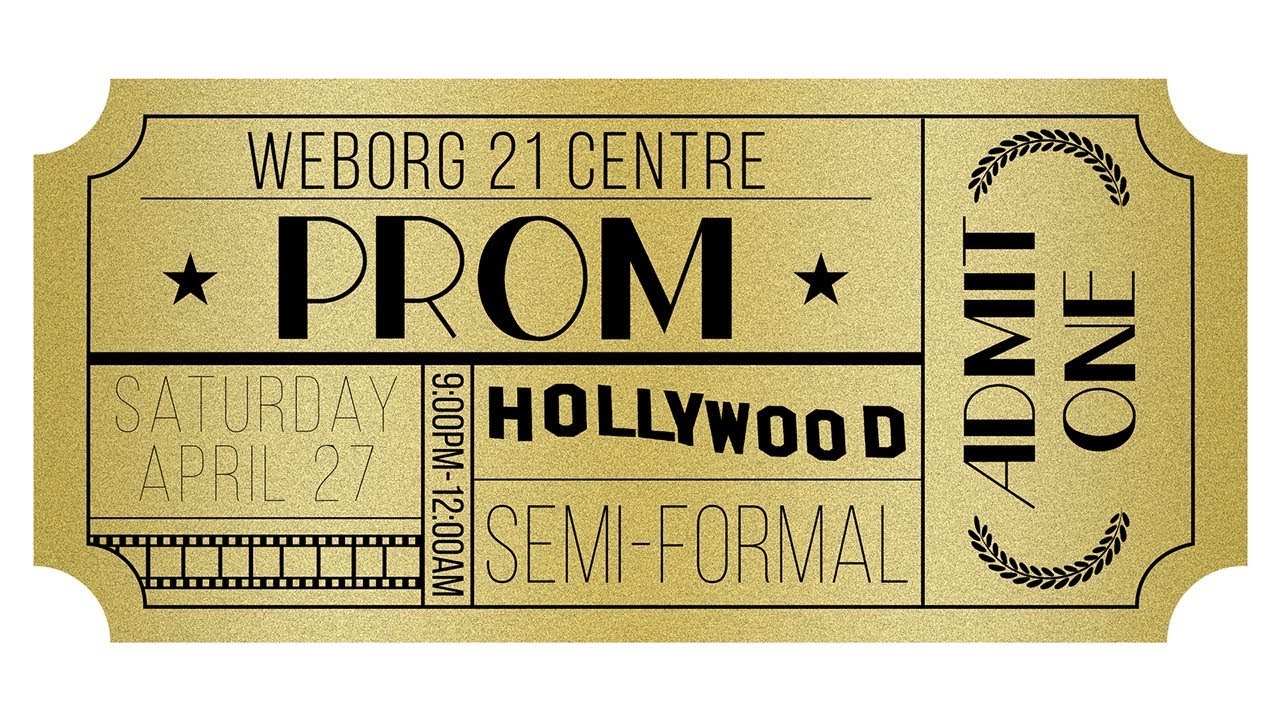
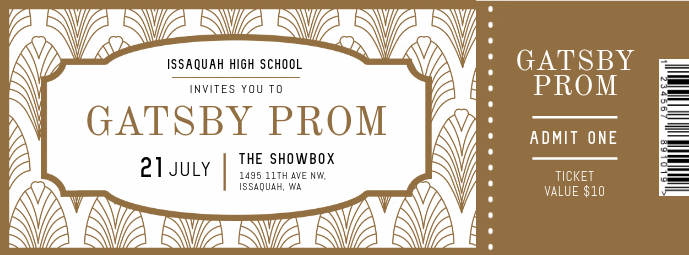
A student club is involved in organizing the event. Sometimes, the dance is held in the school gymnasium; other times, a private venue is rented, such as a hotel conference room or a community hall. Students plan the theme of the event, designing posters, finding a DJ to play music and a photographer to take photos of each pair or group of attendees, ordering food, and planning decorations.
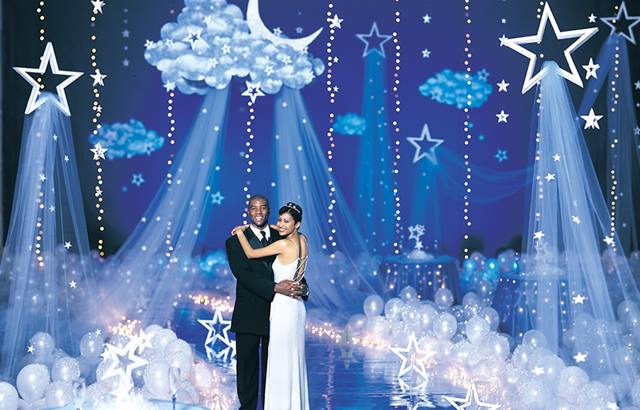

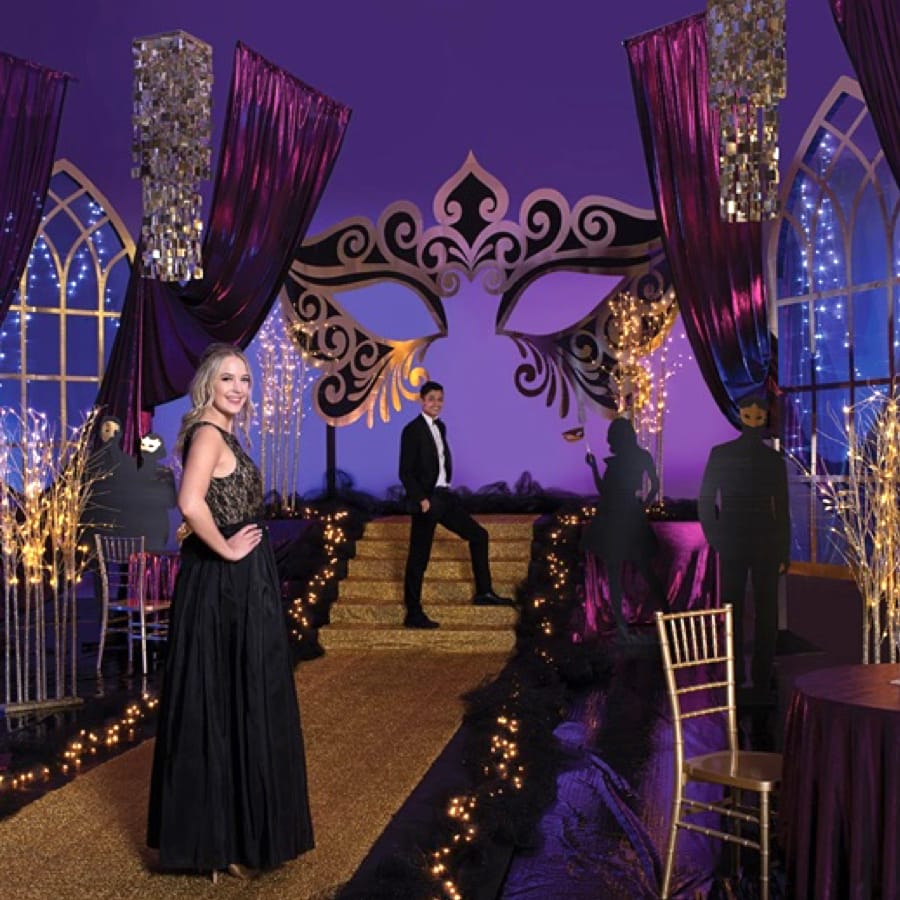
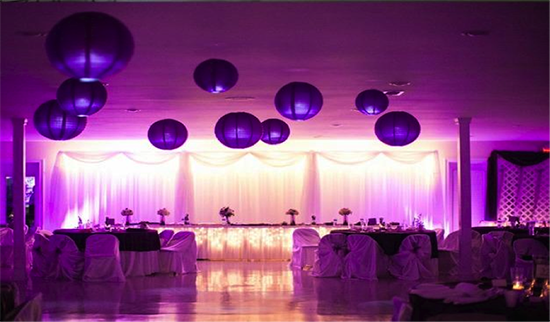
In addition, many schools have a “royal court” – before the event, the students vote to elect a “prom king” and “prom queen”, and the winners are announced and crowned at the event. In some cases, second-place recipients get the title of “prince” and “princess,” but these titles are rare. Because king and queen are gendered titles, some schools have recently introduced titles such as “prom sovereign” to actively include non-binary students.
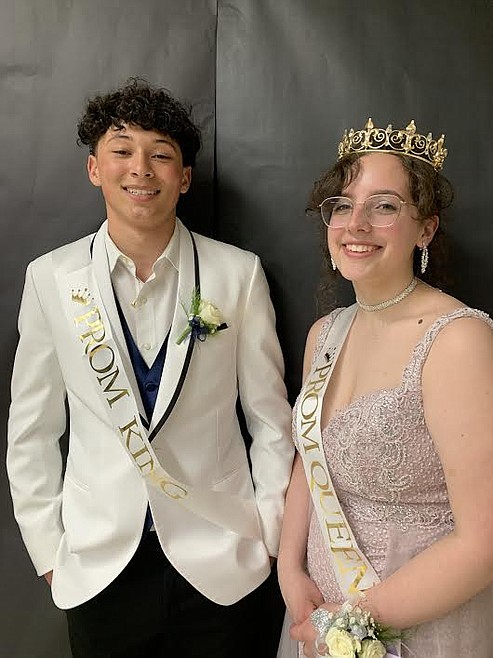
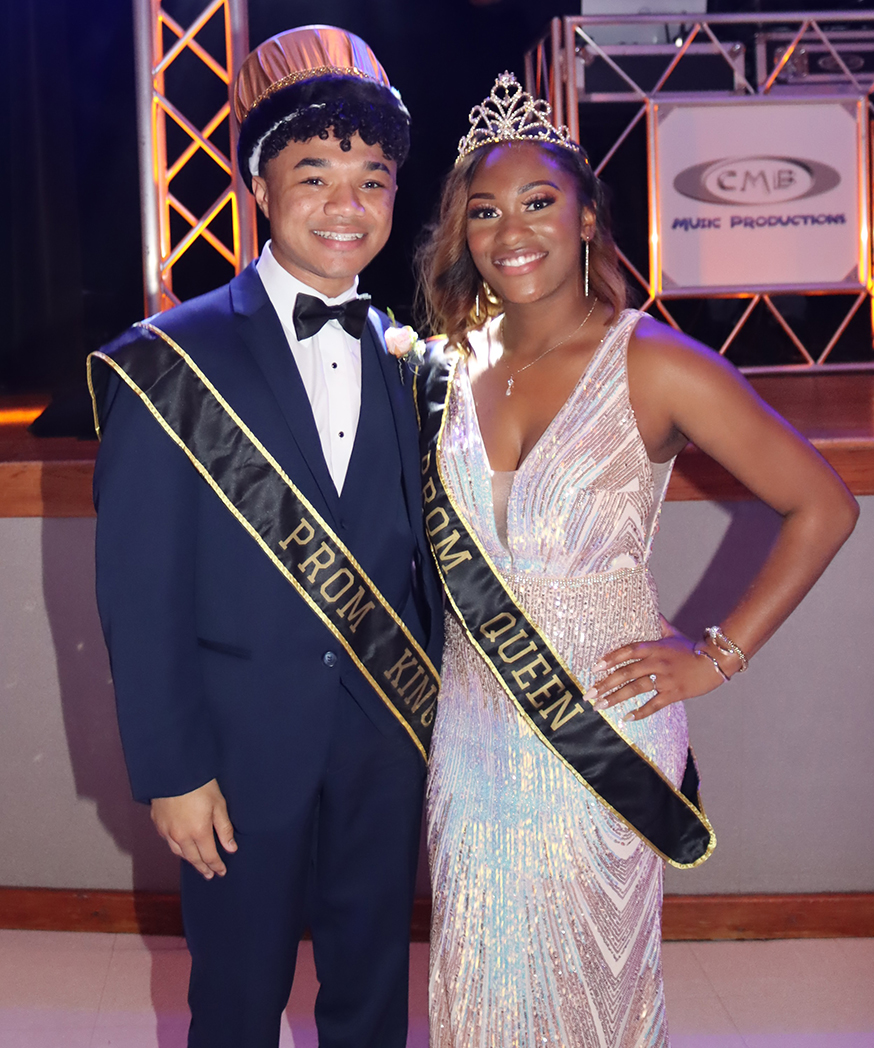
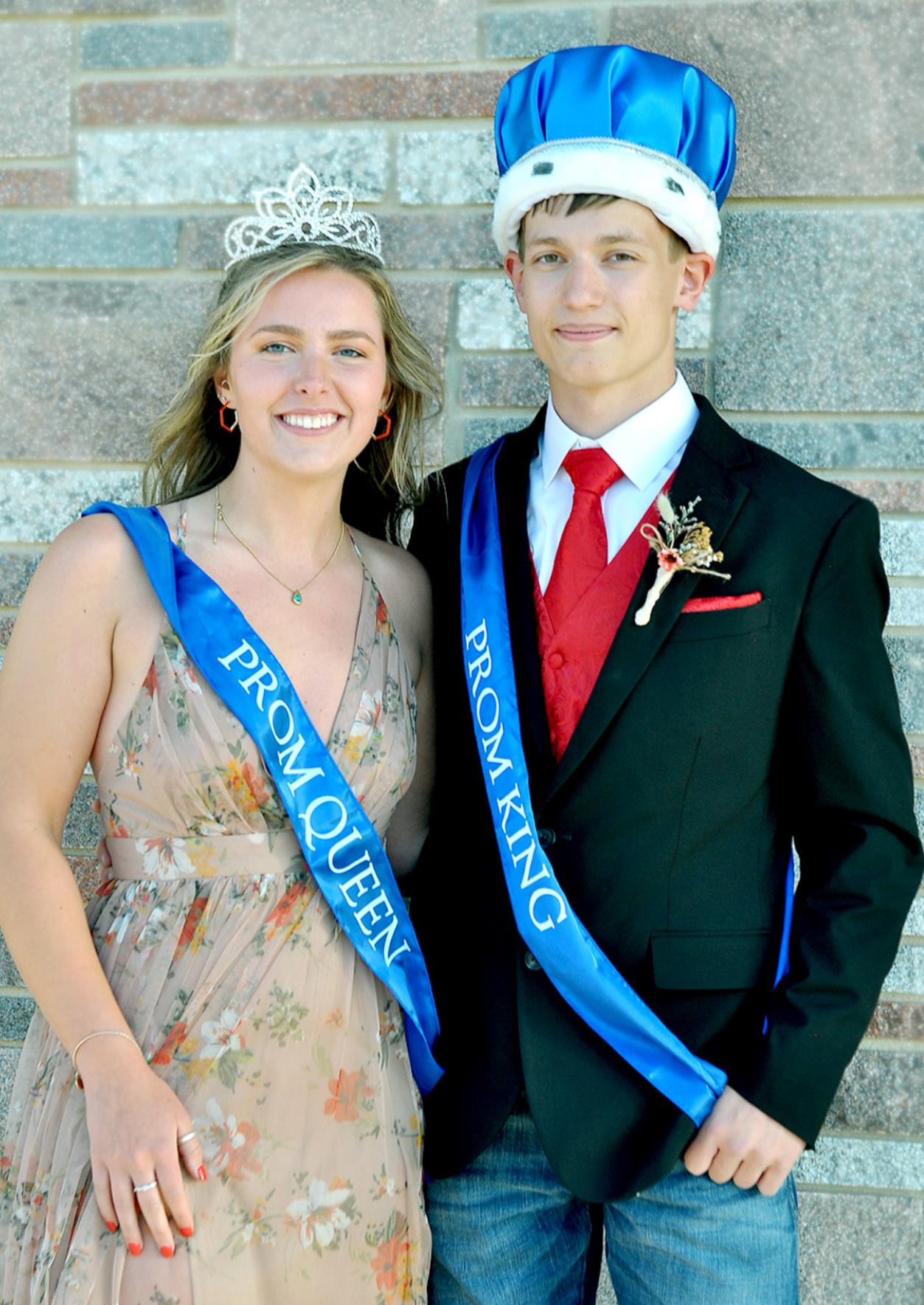
The event is mostly dancing and talking, and there are chaperones at the event to monitor students and make sure people behave appropriately. Music and dancing are usually modern popular styles, although some themed events may have special songs.
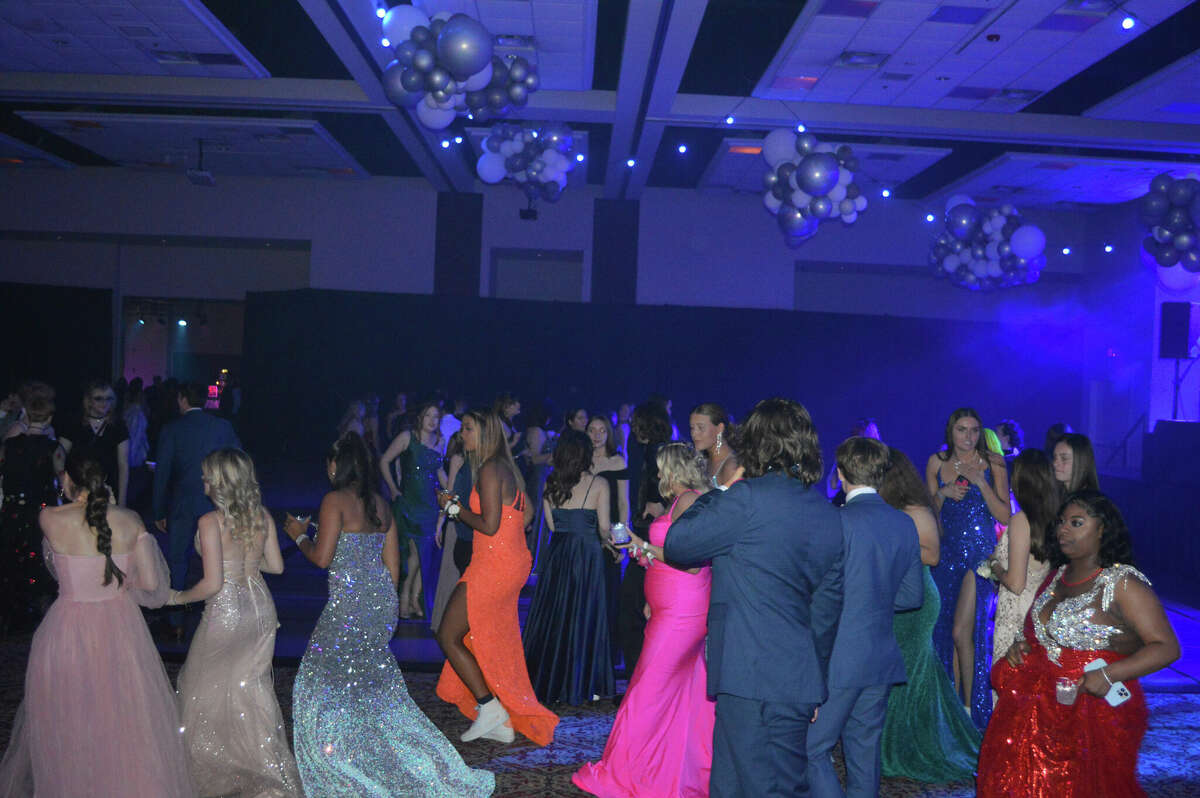
Some students use prom as an opportunity to ask their crush out on a first date, while students already in a relationship often use it as a chance to have a special night and take their relationship a step further. Others simply use it as an excuse to celebrate the end of the school year and their high school experience. All in all, it’s a fun event to attend!
Purity Balls
Another legacy of debutante balls is the purity ball. Purity balls became popular among conservative Christians in the late 20th century, likely as a response to the midcentury “sexual liberation” social revolution. At a purity ball, young girls dress up in white dresses and attend with their fathers, where they promise to remain “pure” (abstain from sex) until marriage. Their father gives them a purity ring, which usually looks like a wedding ring, to indicate that their purity belongs to their father until it belongs to their husband. This practice is strongly criticized in mainstream American society.
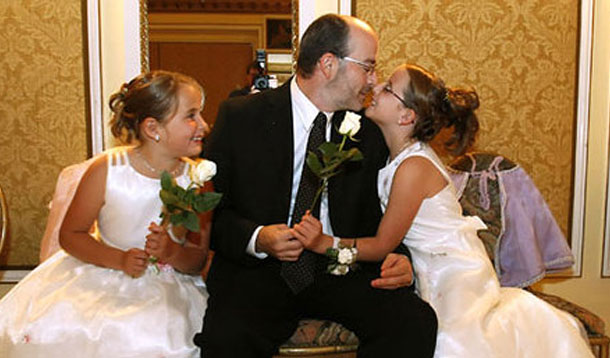
Photos indicate that the ceremonies can look very similar to weddings:
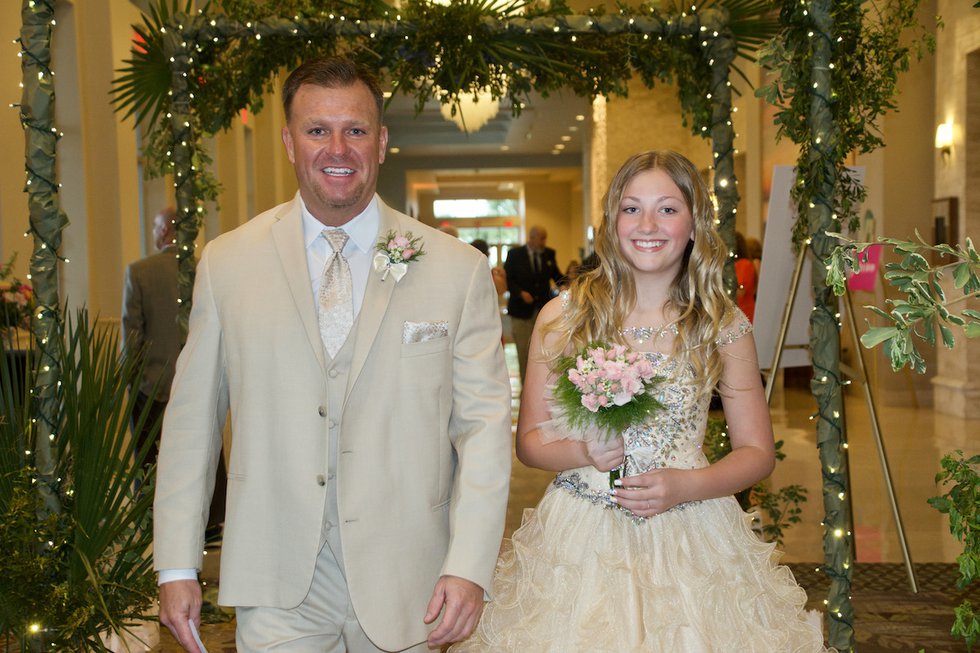
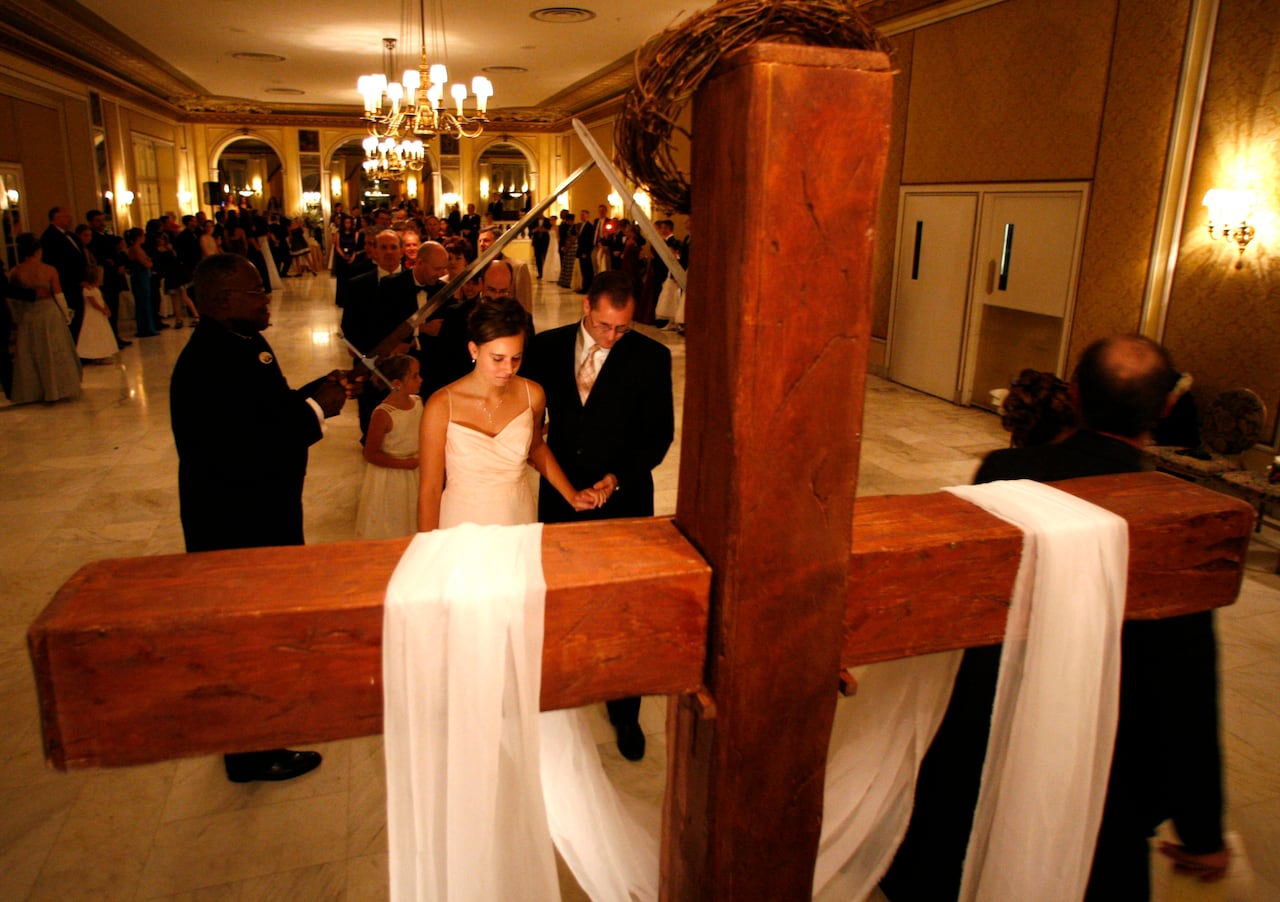
Other aspects of some ceremonies are clearly Christian but not associated with weddings:

Because of the stigma, event organizers tend to seek alternate names, so it can be hard to calculate how many purity balls are hosted each year.
You can find more examples and an interview with an outside photographer at: https://time.com/3800304/happy-fathers-day-portraits-from-americas-purity-balls/
